Hematoma Formation: Comprehensive Guide on Types, Symptoms, Causes, and Treatments
What are the types of hematomas? What are the symptoms of a hematoma? What causes hematomas? How are hematomas treated? Get the answers to these questions and more in this comprehensive guide.
Types of Hematomas
Hematomas can occur in various locations within the body. The main types of hematomas include:
- Subcutaneous hematoma – Occurs just under the skin
- Intramuscular hematoma – Occurs within the muscles
- Subungual hematoma – Occurs under the fingernail or toenail
- Auricular hematoma – Occurs within the ear
- Septal hematoma – Occurs within the nose
- Abdominal hematoma – Occurs in or around the internal organs
- Epidural hematoma – Occurs between the dura mater and the skull
- Subdural hematoma – Occurs under the dura mater
- Subarachnoid hematoma – Occurs on the surface of the brain, under the arachnoid layer of the meninges
- Intracerebral or intraparenchymal hematoma – Occurs within the brain tissue itself
Symptoms of Hematomas
The symptoms of a hematoma can vary depending on the size and location of the injury. Common symptoms include:
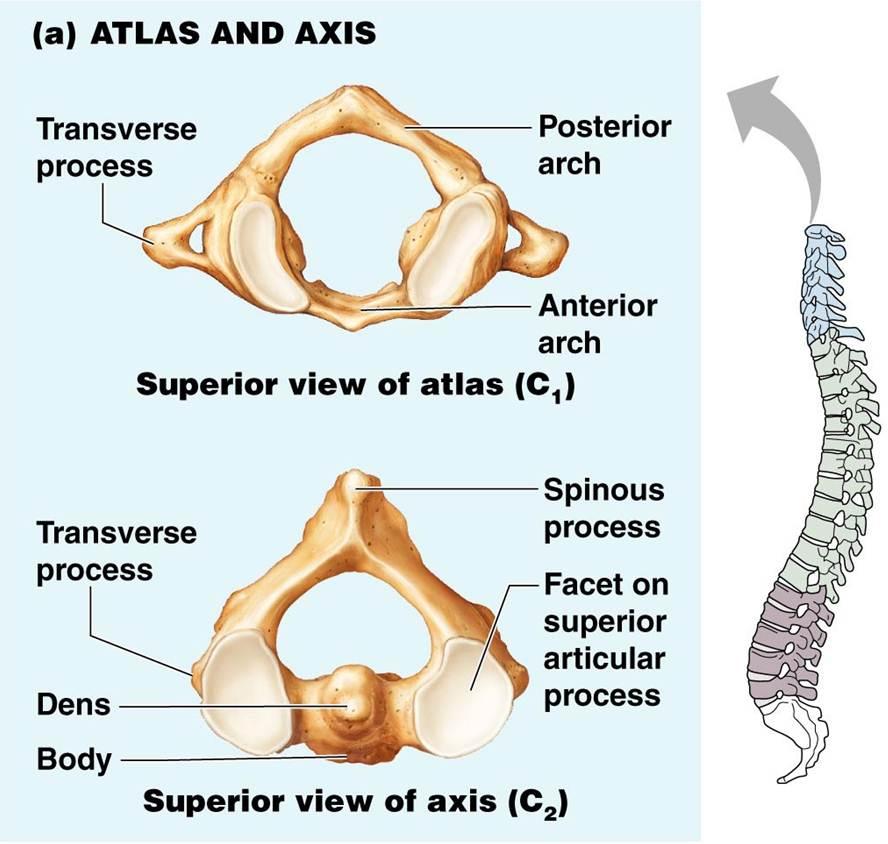
- Pain – The area may be tender or painful to the touch
- Swelling – The area may appear visibly swollen or bruised
- Discoloration – The skin may appear discolored, ranging from red to purple to black
- Limited mobility – If the hematoma is in a joint or muscle, it may limit range of motion or movement
- Headache – If the hematoma is in the head, it may cause a severe headache
- Nausea or vomiting – Hematomas in the head may also cause nausea or vomiting
Causes of Hematomas
Hematomas can be caused by a variety of factors, including:
- Trauma – Any physical injury or trauma to the body can cause a hematoma, such as a blow, fall, or car accident
- Blood clotting disorders – Conditions like hemophilia or von Willebrand’s disease that affect blood clotting can make someone more prone to hematomas
- Medications – Certain medications, like blood thinners, can increase the risk of hematomas
- Underlying medical conditions – Conditions like liver disease, kidney disease, or leukemia can also contribute to hematoma formation
Diagnosis of Hematomas
Hematomas are typically diagnosed through a physical exam and medical history. The doctor may also order imaging tests, such as:
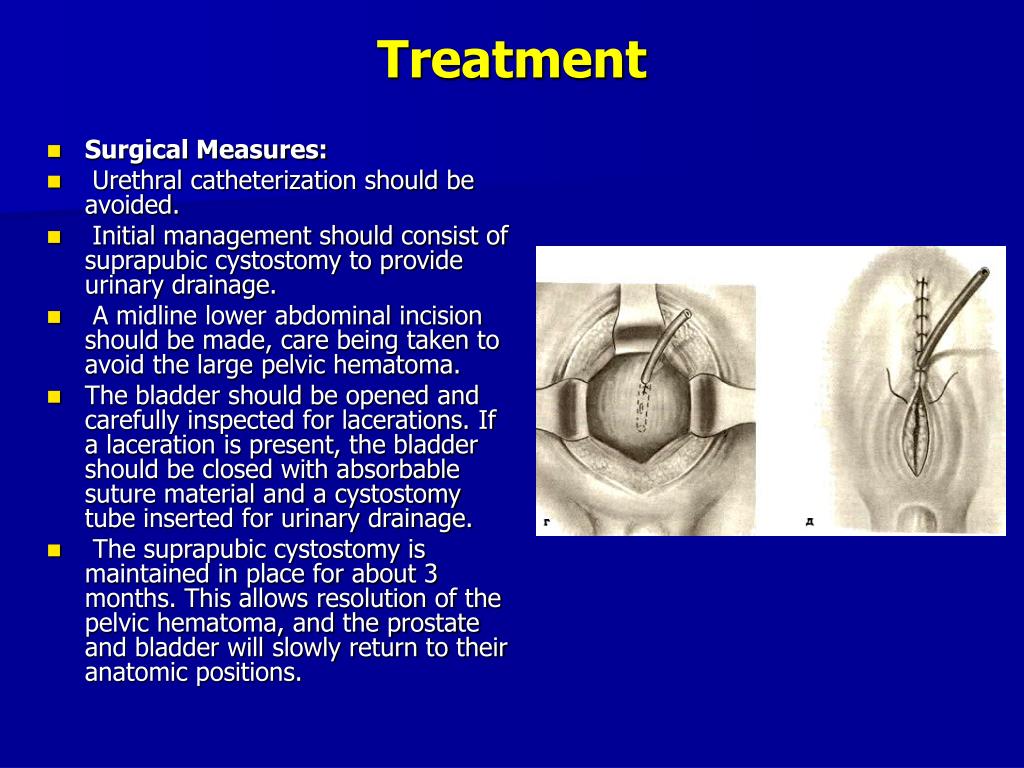
- X-rays – To check for underlying bone fractures
- CT scans – To visualize the extent and location of the hematoma, especially in the case of head injuries
- MRI scans – To get a more detailed view of the hematoma and any surrounding tissue damage
Treatments for Hematomas
The treatment for a hematoma depends on the size, severity, and location of the injury. Some common treatments include:
- Rest, ice, compression, and elevation (RICE) – For mild hematomas, this can help reduce swelling and pain
- Medication – Over-the-counter pain relievers or anti-inflammatory drugs may be prescribed
- Drainage – Large or deep hematomas may need to be drained surgically to release the accumulated blood
- Surgery – In some cases, surgery may be necessary to repair the damaged blood vessel or remove the hematoma
Prevention of Hematomas
While hematomas can’t always be prevented, there are some steps you can take to reduce your risk:
- Wear protective gear – Use helmets, pads, or other protective equipment when engaging in activities with a high risk of injury
- Manage underlying conditions – If you have a blood clotting disorder or other medical condition that increases your risk, work with your healthcare provider to manage it
- Be cautious with medications – Talk to your doctor about the risks of blood thinners or other medications that may increase your risk of hematomas
When to Seek Medical Attention
It’s important to seek immediate medical attention if you suspect a hematoma, especially if it’s due to a head injury and you or the person you’re with is experiencing vomiting, severe headache, or other concerning symptoms. Call 911 or go to the nearest emergency room right away.
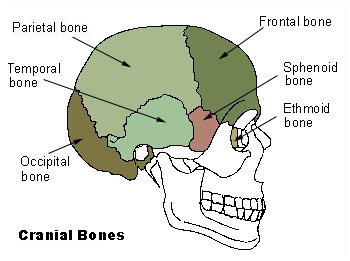
Trauma and First Aid Quiz on RxList
Images provided by:
1. iStockPhoto
2. iStockPhoto
3. iStockPhoto
4. iStockPhoto
5. Getty Images
6. iStockPhoto
7. iStockPhoto
8. iStockPhoto
9. iStockPhoto
10. iStockPhoto
11. iStockPhoto
Sources:
Science Daily. Physical Trauma.
<http://www.sciencedaily.com/articles/p/physical_trauma.htm>
American Psychological Association. Trauma.
<http://www.apa.org/topics/trauma/>
UpToDate. Shock in adults: Types, presentation, and diagnostic approach.
<http://www.uptodate.com/contents/shock-in-adults-types-presentation-and-diagnostic-approach>
De La Salle University. First Aid.
<http://www.dlsu.edu.ph/offices/sps/rotc/pdf/ms1/first-aid.pdf >
FamilyDoctor.org. First Aid: Cuts, Scrapes and Stitches.
<http://familydoctor.org/familydoctor/en/prevention-wellness/staying-healthy/first-aid/first-aid-cuts-scrapes-and-stitches.html>
Amercian Red Cross. You Too Can Save a Life.
<http://www.redcross.org/news/article/mt/billings/You-Too-Can-Save-a-Life>
Medscape. Definition of Cardiopulmonary Resuscitation (CPR).
<http://emedicine.medscape.com/article/1344081-overview>
American Academy of Orthopaedic Surgeons. Sprains and Strains: What’s the Difference?
<http://orthoinfo.aaos.org/topic.cfm?topic=A00111>
CDC. What Podiatrists Would Like Team Members to Know About Foot Health and Diabetes.
<http://www.cdc.gov/diabetes/ndep/pdfs/ppod-guide-podiatrists.pdf>
Osteopathic Family Physician. Bruising.
<http://www.acofp.org/uploadedFiles/ACOFP/Practice_Management/bruising.pdf3>
CDC. Injury Prevention & Control: Traumatic Brain Injury.
<http://www. cdc.gov/concussion>
cdc.gov/concussion>
CDC. Burns.
<http://www.cdc.gov/masstrauma/factsheets/public/burns.pdf>
THIS TOOL DOES NOT PROVIDE MEDICAL ADVICE. It is intended for general informational purposes only and does not address individual circumstances. It is not a substitute for professional medical advice, diagnosis or treatment and should not be relied on to make decisions about your health. Never ignore professional medical advice in seeking treatment because of something you have read on the RxList Site. If you think you may have a medical emergency, immediately call your doctor or dial 911.
Hematoma – Symptoms, Causes, Treatments
A hematoma is a pocket of blood inside the body caused by bleeding (hemorrhage). It forms when a blood vessel is ruptured or leaks blood into the surrounding tissue or body cavity. A bruise is a confined, mild type of hematoma.
Hematomas can occur just under the skin (subcutaneous hematoma), within muscles (intramuscular hematoma) and other soft tissues, under fingernails (subungual), and within the ear (auricular hematoma) or nose (septal hematoma).
You can also have bleeding in or around internal organs, such as abdominal hematoma, or inside your skull, which, depending upon its precise location, may be referred to as:
- Epidural hematoma, between the dura mater—the outer layer of the membranes (meninges)—and skull
- Subdural hematoma, under the dura mater
- Subarachnoid hematoma, on the surface of the brain, under the arachnoid layer of the meninges
- Intracerebral, or intraparenchymal hematoma, a blood pocket in the brain tissue itself
Hematomas can be caused by a wide variety of conditions. Any physical harm to your body can easily cause bruises of varying size, and head trauma can cause a hematoma in the skull. Certain conditions, diseases or disorders can cause a hematoma to form after only minor harm. For example, clotting disorders, such as hemophilia or Von Willebrand’s disease (hereditary bleeding disorder), cause easy bleeding.
Aside from the blood loss, a hematoma can cause problems for neighboring or distant structures. An expanding hematoma within an enclosed structure, such as the skull or the pericardial covering of the heart, can act like a tourniquet and interrupt the blood flow in nearby arteries and veins. In similar fashion, adjoining organs can be displaced or jeopardized by the fluid pressure caused by a hematoma. In the pelvis and extremities, a hematoma often forms following a bone fracture and may allow a significant portion of the body’s blood to pool and drain the circulation without being detected.
Treatment of a hematoma depends on its size, severity and location. Small, mild hematomas may not need treatment, though ice, rest, compression and elevation may help reduce associated symptoms and speed recovery. Doctors treat larger hematomas, or hematomas in or around other organs, in a variety of ways. Skull hematomas may require removing a portion of the skull temporarily or drilling a hole into the skull to reduce pressure on the brain.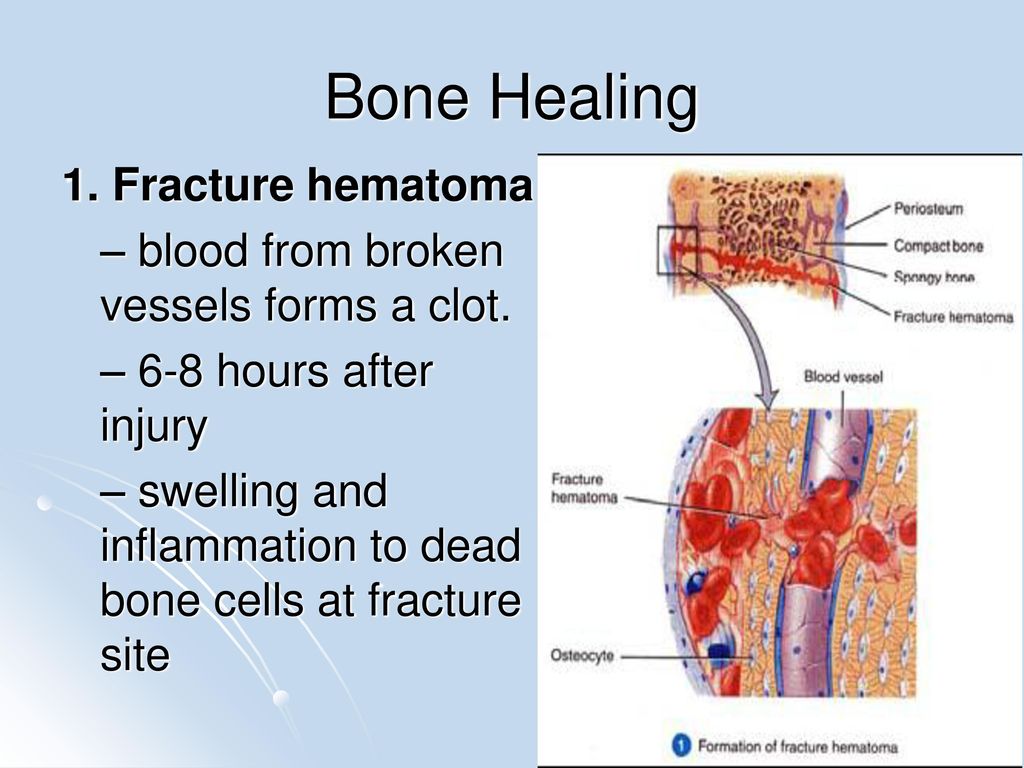
Seek immediate medical care (call 911) if you suspect a hematoma due to head injury, especially if you, or the person you are with, is vomiting or experiencing confusion or loss of consciousness for even a brief moment.
Seek prompt medical care for a hematoma that is rapidly expanding or if you have experienced significant trauma, have a known coagulation (clotting) disorder, or are on anticoagulation (anticlotting) medications.
Treating a Post-Surgical Seroma or Hematoma
A hematoma is generally defined as a collection of blood outside of blood vessels. It occurs because the wall of a blood vessel (artery, vein, or capillary) has been damaged, and blood has leaked into tissues where it does not belong. Hematoma is the term used to describe bleeding which has more or less clotted, different from hemorrhage which signifies active, ongoing bleeding. A bruise, for example, is actually a hematoma.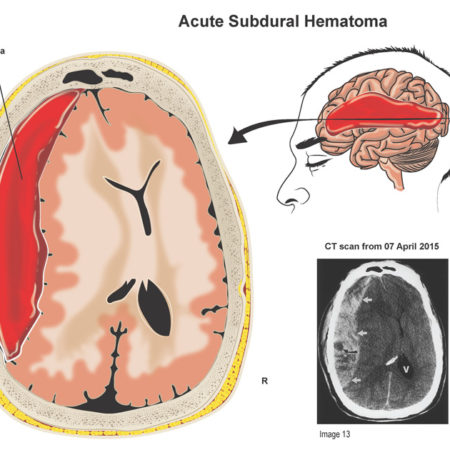 During surgery, hematomas are caused by an injury to the wall of a blood vessel, prompting blood to seep into the surrounding tissues. Your surgeon will seal blood vessels as they are cut and will double-check those seals before closing the incision.
During surgery, hematomas are caused by an injury to the wall of a blood vessel, prompting blood to seep into the surrounding tissues. Your surgeon will seal blood vessels as they are cut and will double-check those seals before closing the incision.
Who is at risk of developing a seroma or hematoma?
The risk of a hematoma is much higher in patients who have been taking blood thinners and in those with some preexisting diseases or bleeding disorders. Vigorous coughing or marked elevation in blood pressure immediately after surgery may also contribute to the formation of a surgical site hematoma. Other risk factors include vigorous exercise, straining, vomiting, stress, and alcohol consumption. This is part of the reason it is so important to follow your doctor’s instructions.
What are some characteristics of a hematoma?
A hematoma produces elevation and discoloration of the surgical wound edges, discomfort, and swelling. Blood sometimes leaks between skin sutures.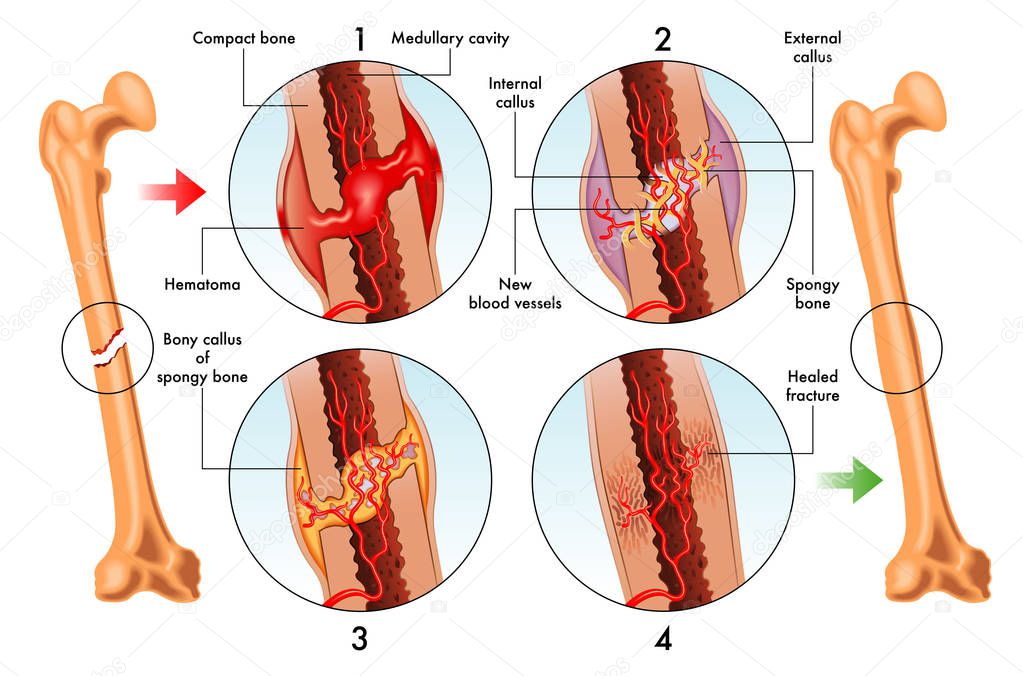 There may be pain and a feeling of fullness in the affected area. Depending on the site, there may even be visible bruising. Hematoma formation following operations on the thyroid, parathyroid, or carotid artery can be particularly dangerous because the hematoma may expand rapidly and compromise the airway.
There may be pain and a feeling of fullness in the affected area. Depending on the site, there may even be visible bruising. Hematoma formation following operations on the thyroid, parathyroid, or carotid artery can be particularly dangerous because the hematoma may expand rapidly and compromise the airway.
How do you treat a hematoma?
Treatment of a hematoma depends on its severity. Small hematomas may resorb after a few days. More severe hematomas that continue to enlarge may require surgery to drain the accumulated blood and/or control any bleeding vessels and reclose the surgical site. A common complication of all hematomas is the risk of infection. Since there is no blood supply to a hematoma (it is a collection of old blood), there is a risk of bacteria colonizing the site. Surgical incision separation and delayed healing may also occur if the hematoma is large enough to compress tissues and prevent oxygen from reaching the surrounding tissue.
What is a seroma?
A seroma is a sterile collection of fluid under the skin, usually at the site of a surgical incision. Fluid builds up under the skin where tissue was removed. The formation of seromas is the body’s response to dead space within tissue that was attached to something before surgery. It may form soon after your surgery or up to 1 to 2 weeks after your procedure. It may appear as a swollen lump and feel tender or sore.
Fluid builds up under the skin where tissue was removed. The formation of seromas is the body’s response to dead space within tissue that was attached to something before surgery. It may form soon after your surgery or up to 1 to 2 weeks after your procedure. It may appear as a swollen lump and feel tender or sore.
What are common treatments for a seroma?
A small seroma is not dangerous. Depending on its size and your symptoms, it may not need to be treated. The seroma may go away on its own within a few weeks or months. Your body slowly absorbs the fluid. No medicine will make it go away faster. But if you have a large seroma or if it’s causing pain, your healthcare provider may drain it. This is done with a syringe and needle. Or the provider may put in a drain. Seromas can return and may need to be drained multiple times. In some cases, it can become infected or turn into an abscess. Rarely, you may need a minor procedure to remove the seroma. Long-term problems from a seroma are rare.
What are some complications that can arise from a post-surgical hematoma or seroma?
Hematomas and seromas may increase the length of hospitalization and cause delayed healing, surgical site infection, and abnormalities in scarring. Therefore, following your healthcare provider’s instructions is very important.
Visit https://sanaramedtech.com/ to learn more about wound care and management.
Hematoma – an overview | ScienceDirect Topics
Hematoma
Hematoma is the most common complication of rhytidectomy, with reported rates in larger series ranging from 1% to 15%.1–6 The severity of hematomas varies widely, from a small-volume seroma to a large, tense, expanding bleed that threatens the viability of the skin flap. Fortunately, the incidence of hematomas requiring surgical intervention and drainage is relatively low, between 1.9% and 3.6%.3,7
Most hematomas occur during the first 24 hours after surgery; however, for the first postoperative week, the surgeon should maintain a high index of suspicion. Although hematomas are most commonly unilateral, they can be bilateral. Furthermore, patients should be educated preoperatively about the hallmark symptoms of hematoma, including severe or increasing pain (especially if unilateral or of sudden onset) and pain that is sometimes described as “ear pain” or a “toothache.” Other telltale signs include copious blood on the dressing, extreme swelling and discoloration that extends to the perioral and periocular regions beyond the dressing, a sensation of extreme tightness of the skin, a “hard” quality of the skin, trismus, dyspnea, and anxiety8 (Figure 47-1). A patient who reports of any of these symptoms during the week after a facelift should be considered to have a hematoma until it is proven otherwise. These symptoms warrant immediate reexamination with the removal of the dressing and the close inspection of the flaps for possible hematoma.
Although hematomas are most commonly unilateral, they can be bilateral. Furthermore, patients should be educated preoperatively about the hallmark symptoms of hematoma, including severe or increasing pain (especially if unilateral or of sudden onset) and pain that is sometimes described as “ear pain” or a “toothache.” Other telltale signs include copious blood on the dressing, extreme swelling and discoloration that extends to the perioral and periocular regions beyond the dressing, a sensation of extreme tightness of the skin, a “hard” quality of the skin, trismus, dyspnea, and anxiety8 (Figure 47-1). A patient who reports of any of these symptoms during the week after a facelift should be considered to have a hematoma until it is proven otherwise. These symptoms warrant immediate reexamination with the removal of the dressing and the close inspection of the flaps for possible hematoma.
The management of a hematoma after rhytidectomy depends on its volume and severity. A small-volume liquefied seroma (i.e., <10 cc) may be asymptomatic and discovered at the first dressing change. The most common location is the infraauricular and postauricular area.8 Larger seromas should be evacuated, milked through the suture line, or aspirated transcutaneously with a syringe and a large-gauge needle. This can be done in the office under sterile conditions, and it is fairly comfortable for the patient as a result of the sensory denervation that occurs during flap elevation. Reaccumulation is common; thus these patients should have a pressure dressing placed and be closely monitored until the seroma has completely resolved.
A small-volume liquefied seroma (i.e., <10 cc) may be asymptomatic and discovered at the first dressing change. The most common location is the infraauricular and postauricular area.8 Larger seromas should be evacuated, milked through the suture line, or aspirated transcutaneously with a syringe and a large-gauge needle. This can be done in the office under sterile conditions, and it is fairly comfortable for the patient as a result of the sensory denervation that occurs during flap elevation. Reaccumulation is common; thus these patients should have a pressure dressing placed and be closely monitored until the seroma has completely resolved.
Large, expanding hematomas (i.e., >10 cc or creating obvious skin tension and skin compromise) mandate immediate operative exploration. General anesthesia in the operating room setting is preferred to relieve patient anxiety, to provide adequate lighting, and to maintain sterility. If no operating room is immediately available, then the incision should be opened, and as much hematoma as possible should be evacuated before reexploration.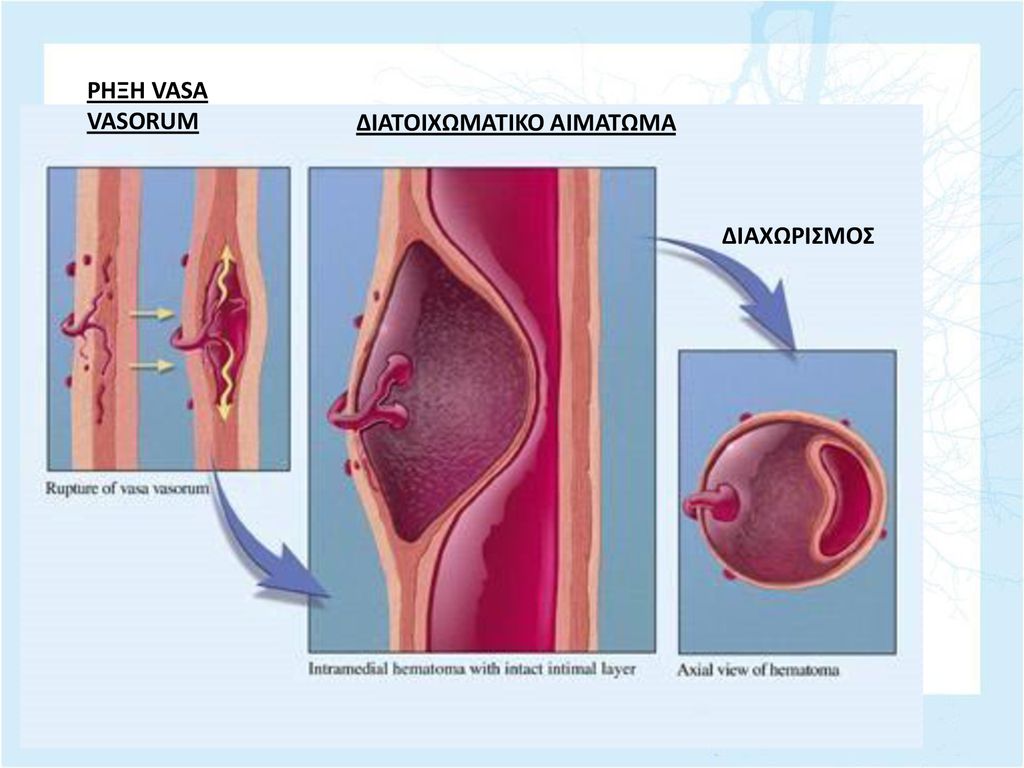 Because large hematomas are typically the result of a bleeding vessel surrounded by copious clotted blood, wide opening and re-elevation of the flap are necessary to evacuate the clot with gentle suction. Irrigation under the flaps allows for the adequate visualization of critical neurovascular structures. Control of the bleeding vessel or vessels with bipolar cautery or ligation with small sutures minimizes potentially devastating sequelae to the surrounding facial nerve branches. Prolonged pressure of more than a few hours on the skin flap can result in venous engorgement and vascular compromise. If skin necrosis results, it can lead to permanent scarring as a result of contracture during wound healing. Like seromas, hematomas can recur. Therefore a pressure dressing should be placed, and the patient should be monitored daily until the hematoma is definitively resolved.
Because large hematomas are typically the result of a bleeding vessel surrounded by copious clotted blood, wide opening and re-elevation of the flap are necessary to evacuate the clot with gentle suction. Irrigation under the flaps allows for the adequate visualization of critical neurovascular structures. Control of the bleeding vessel or vessels with bipolar cautery or ligation with small sutures minimizes potentially devastating sequelae to the surrounding facial nerve branches. Prolonged pressure of more than a few hours on the skin flap can result in venous engorgement and vascular compromise. If skin necrosis results, it can lead to permanent scarring as a result of contracture during wound healing. Like seromas, hematomas can recur. Therefore a pressure dressing should be placed, and the patient should be monitored daily until the hematoma is definitively resolved.
Although large retrospective studies have identified numerous risk factors for hematoma, perioperative hypertension is probably the most common. Grover and colleagues2 reported a statistically significant correlation between anterior platysmaplasty, a preoperative systolic blood pressure of more than 150 mm Hg, male gender, aspirin and nonsteroidal anti-inflammatory drug (NSAID) use, and smoking with hematoma formation in a series of 1078 rhytidectomy patients. Another series by Straith and colleagues9 of 500 facelift patients found that preoperative systolic pressures of more than 150 mm Hg were associated with a 9.2% rate of hematoma as compared with 2.4% among patients with systolic pressures of less than 150 mm Hg. Berner and colleagues10 studied 202 facelift patients and found that systolic pressures were maximally elevated 3 hours postoperatively. During this period of “reactive hypertension,” preoperative and intraoperative medications became less effective as a result of the adrenergic response to anxiety and pain, and patients with preexisting hypertension had more exaggerated responses postoperatively.
Grover and colleagues2 reported a statistically significant correlation between anterior platysmaplasty, a preoperative systolic blood pressure of more than 150 mm Hg, male gender, aspirin and nonsteroidal anti-inflammatory drug (NSAID) use, and smoking with hematoma formation in a series of 1078 rhytidectomy patients. Another series by Straith and colleagues9 of 500 facelift patients found that preoperative systolic pressures of more than 150 mm Hg were associated with a 9.2% rate of hematoma as compared with 2.4% among patients with systolic pressures of less than 150 mm Hg. Berner and colleagues10 studied 202 facelift patients and found that systolic pressures were maximally elevated 3 hours postoperatively. During this period of “reactive hypertension,” preoperative and intraoperative medications became less effective as a result of the adrenergic response to anxiety and pain, and patients with preexisting hypertension had more exaggerated responses postoperatively.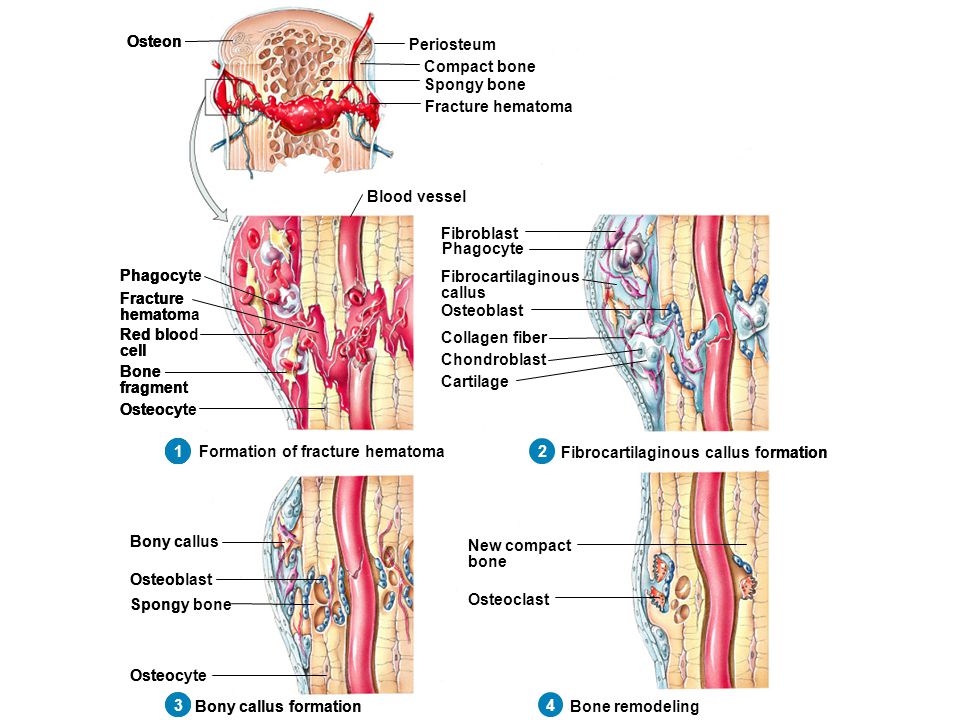 Some evidence suggests that perioperative benzodiazepines may counteract this “reactive hypertenstion.”8 Hypertension is an extremely common medical condition among older patients who are typically undergoing facial rejuvenation surgery. Prevention requires preoperative diagnosis and control by the patient’s internist, medication to be taken the morning of surgery, postoperative monitoring in the recovery room before discharge, and the continuation of the regimen after surgery.
Some evidence suggests that perioperative benzodiazepines may counteract this “reactive hypertenstion.”8 Hypertension is an extremely common medical condition among older patients who are typically undergoing facial rejuvenation surgery. Prevention requires preoperative diagnosis and control by the patient’s internist, medication to be taken the morning of surgery, postoperative monitoring in the recovery room before discharge, and the continuation of the regimen after surgery.
Antiplatelet medications such as aspirin and NSAIDs have also been linked to hematoma and ecchymoses after rhytidectomy (Figure 47-2). Grover and colleagues2 found that taking these medications within 2 weeks of rhytidectomy had a statistically higher rate of hematoma formation. Other supplements and over-the-counter medications (e.g., ginseng, garlic, ginkgo biloba, vitamin E) have also been found to inhibit clotting.11 Thus, to decrease the risk of hematoma, patients should be advised to stop all such medications 2 weeks before surgery.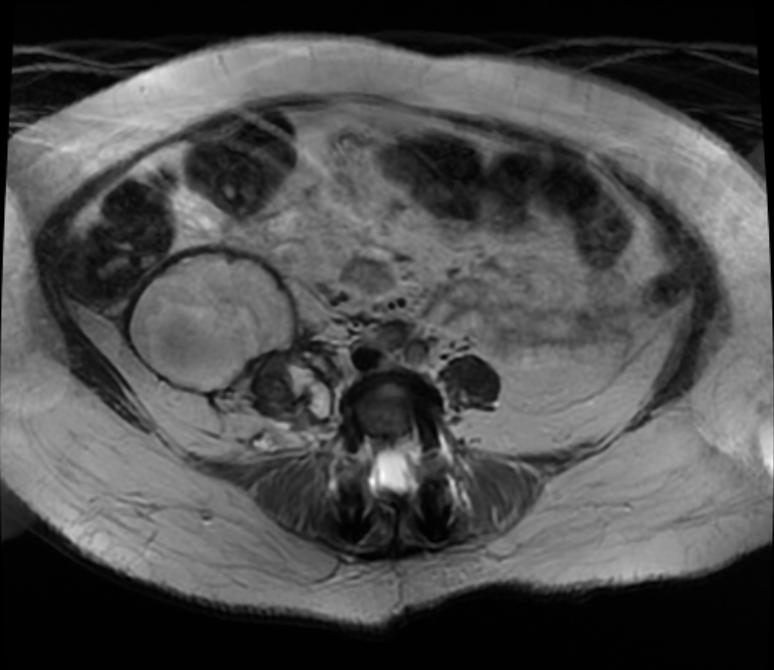
Increased pressure in the head and neck from coughing, vomiting, bending, or straining can also initiate bleeding and hematoma formation. Gentle emersion from anesthesia, antinausea medications, stool softeners, and activity restriction are an integral part of the intraoperative and postoperative regimen.
Several studies have identified males to be at higher risk of hematoma formation than females. Baker and colleagues12 studied 137 male patients undergoing facelifts and reported a hematoma rate of 8.7% as compared with 3.3% in large series composed of mostly females. Another study by Lawson and Naidu13 of 115 male facelift patients described a hematoma rate of 9.6%. Grover and colleagues14 reported a 12.9% hematoma rate in a study of 62 male facelift patients as compared with a rate of 3.6% in 1016 female patients. These data are consistent with most surgeons’ subjective experience of more bleeding during male facelift surgery. Hypotheses to explain this phenomenon include increased vascularity of the subdermal plexus supplying the hair follicles and sebaceous glands and denser connections between the dermis and subcutaneous tissue. 12
12
Other factors have also been examined. Although some smaller studies have reported trends toward decreased rate of hematoma with the use of fibrin glue,15 larger series have not reproduced these results.2 However, other less quantifiable benefits, such as decreased bruising and edema, have been reported with the use of fibrin glue.16 The type of anesthesia has not been consistently associated with an increased incidence of hematoma. Rees and colleagues3 studied 1236 consecutive facelift patients and found a hematoma rate of 1.1% with general anesthesia as compared with 0.9% with monitored intravenous sedation. Other risk factors (e.g., patient age, primary vs. secondary surgery, type of dissection) have also been studied and not found to be associated with hematoma formation.2
What is a Hematoma? – Definition, Types, Symptoms & Treatment – Video & Lesson Transcript
Causes of Hematoma
Simply put, a hematoma is caused by some type of damage to a blood vessel that causes blood to leak out into places it has no business being. Once it pools in this new area, it begins to clot, forming a small lump. Trauma is the most common cause of a hematoma, but this doesn’t include just major traumas like car accidents or falling off a building. Trauma can be as simple as a sneeze or cough that is strong enough to damage a blood vessel.
Once it pools in this new area, it begins to clot, forming a small lump. Trauma is the most common cause of a hematoma, but this doesn’t include just major traumas like car accidents or falling off a building. Trauma can be as simple as a sneeze or cough that is strong enough to damage a blood vessel.
Other causes include aneurysms, medications like blood thinners, diseases like autoimmune disorders or infections, conditions that cause the blood vessels to weaken, high blood pressure, stroke, tumors, or conditions like low blood platelets (which help the blood clot). Finally, hematoma formation may be spontaneous and not linked to any direct trauma.
Types
By far, the most dangerous type of hematoma is that which forms somewhere in the skull. The skull is an enclosed space, so where a hematoma forms and creates pressure, the tissues have nowhere to go. This can cause them to compact and result in brain damage. Let’s look at some specific types of hematomas.
Hematomas that can form in or on the head:
- Epidural hematoma: blood pools in the epidural space (the space between the lining of the brain and the skull)
- Intracerebral hematoma: blood pools in the brain tissue itself
- Scalp hematoma: forms outside of the skull and may be felt as a ‘bump on the head’
- Aural or ear hematoma: blood gets trapped between the thin outer skin of the ear and the cartilage
- Septal hematoma: happens after trauma to the nose and can perforate the septum (tissue that separates the nostrils)
Hematomas that can form on other parts of the body:
- Orthopedic injuries: occur when broken bones leak blood or damage surrounding tissue
- Intramuscular hematoma: occurs in a muscle and are usually accompanied by a lot of pain and swelling
- Subungual hematoma: occurs when the fingers or toes get crunched
- Subcutaneous hematoma: occurs right under the surface of the skin
- Intra-abdominal hematoma: can form inside any organ or in the spaces between organs
Symptoms
Symptoms vary based on where the hematoma is located, how big it is, and its proximity to other structures.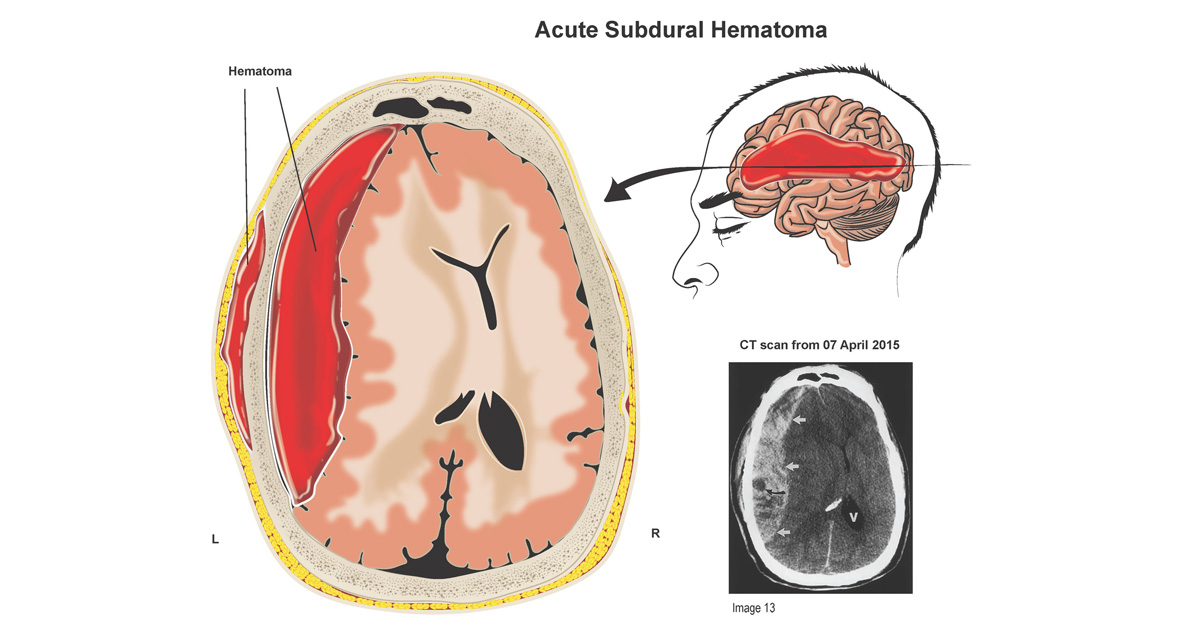 Sometimes there aren’t any symptoms at all. If symptoms are present, inflammation, pain, swelling, and redness are the most common. Skin or nail discoloration, blood loss, internal bleeding, or shock can also occur. Hematomas in the head can cause headaches, drowsiness, seizures, or vomiting.
Sometimes there aren’t any symptoms at all. If symptoms are present, inflammation, pain, swelling, and redness are the most common. Skin or nail discoloration, blood loss, internal bleeding, or shock can also occur. Hematomas in the head can cause headaches, drowsiness, seizures, or vomiting.
Treatment
Superficial or minor hematomas may heal on their own over time. When the blood vessel stops bleeding, the clotted hematoma will eventually dissolve. If symptoms occur, the acronym RICE is helpful. R is for rest – rest the area, especially right after the injury. I is for ice – applying ice can help alleviate swelling and inflammation. C is for compression – applying pressure can help stop further bleeding and encourage circulation. E is for elevate – holding the area above the level of the heart (if possible) can also help reduce swelling.
More serious hematomas require medical intervention, especially those found in the head. The most common procedure is to surgically drain the blood clot to release pressure from the surrounding tissues. Specific procedures or treatments depend on the location and severity of the hematoma.
Specific procedures or treatments depend on the location and severity of the hematoma.
Lesson Summary
Let’s review what I like to call ‘hematoma highlights.’ A hematoma forms when blood gets out of the blood vessels and clots and is most commonly caused by some type of trauma (though there are many possible causes). If symptoms are present, they usually include pain, swelling, and redness, but will vary based on the location. Hematomas may be found anywhere on the body, though the most dangerous ones are found in the head. Minor or small hematomas usually go away on their own, but more serious ones may require surgical intervention.
Expansile Organized Maxillary Sinus Hematoma: MR and CT Findings and Review of Literature
Abstract
SUMMARY: An organized hematoma is a chronic state of fibrotic tissue surrounding a hemorrhage. A mass lesion resulting from hematoma in the maxillary sinus was first reported in 1917, and the term, “blood boil,” was clinically coined from such features as encapsulated blood and locally aggressive behavior.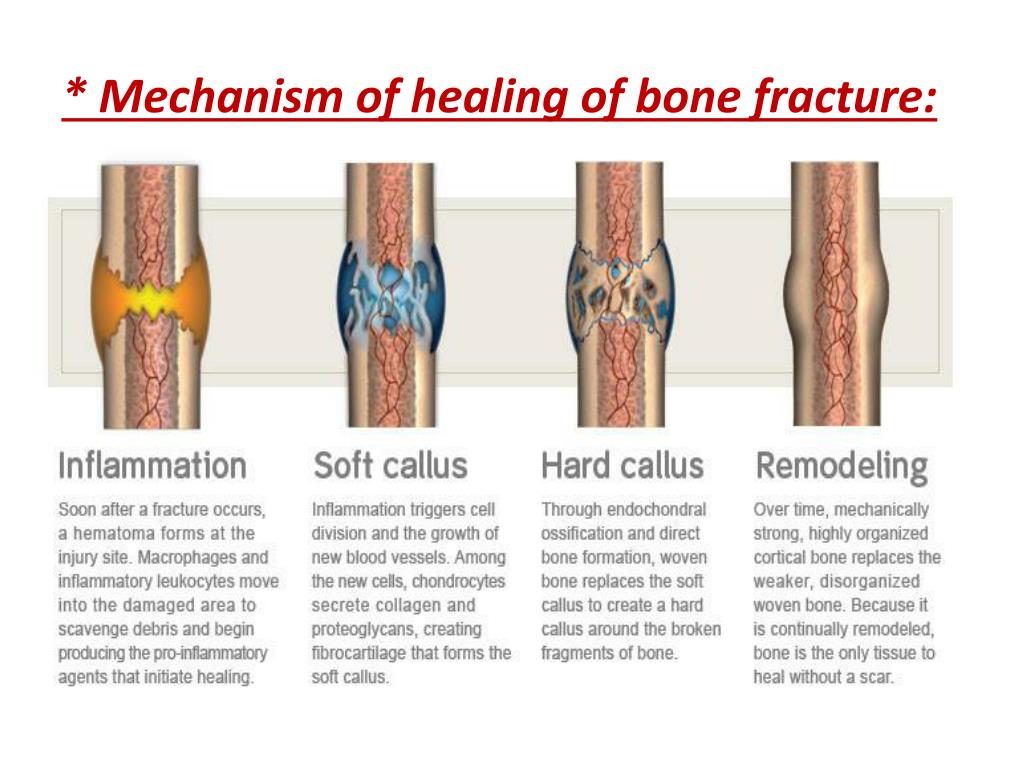 Subsequently, others have reported lesions with a similar appearance and clinical course, and now, in Japan, blood boil is used as a clinical term for such lesions. Factors that may predispose a patient to hematoma formation vary, and the pathogenesis of the mass is still uncertain. The lesions are mainly composed of an organized hematoma, regardless of their origin. We present 2 cases of organized maxillary sinus hematomas that have unusual radiologic findings and correlate these findings with the histopathologic findings.
Subsequently, others have reported lesions with a similar appearance and clinical course, and now, in Japan, blood boil is used as a clinical term for such lesions. Factors that may predispose a patient to hematoma formation vary, and the pathogenesis of the mass is still uncertain. The lesions are mainly composed of an organized hematoma, regardless of their origin. We present 2 cases of organized maxillary sinus hematomas that have unusual radiologic findings and correlate these findings with the histopathologic findings.
Case Reports
Case 1
A 22-year-old man was referred to the otolaryngology department with a 6-month history of nasal congestion and swelling in his left cheek. When he was examined in our hospital, no epistaxis or neurologic deficit was noticed. There was no history of hematopoietic disorder. Endonasal examination revealed a pinkish mass in the left nasal cavity. The nasal septum was deviated to the right. A CT scan showed an 8-cm mass in the left maxillary sinus, which was primarily expansile with focal areas of bone loss (Fig 1A). On MR imaging, the mass had a slightly high T1-weighted signal intensity, heterogeneous low-to-high T2-weighted signal intensity, and scattered areas of well-demarcated enhancement on contrast-enhanced T1-weighted images (Fig 1B–D). A high signal intensity zone surrounded the mass on T2-weighted images (Fig 1C). A malignant tumor was suspected because of the size of the mass and the bony changes. Caldwell-Luc approach allowed en bloc resection of the mass. Pathology showed a fibrous encapsulated organized hematoma with surrounding inflamed mucosa without a neoplastic tissue (Fig 1E).
On MR imaging, the mass had a slightly high T1-weighted signal intensity, heterogeneous low-to-high T2-weighted signal intensity, and scattered areas of well-demarcated enhancement on contrast-enhanced T1-weighted images (Fig 1B–D). A high signal intensity zone surrounded the mass on T2-weighted images (Fig 1C). A malignant tumor was suspected because of the size of the mass and the bony changes. Caldwell-Luc approach allowed en bloc resection of the mass. Pathology showed a fibrous encapsulated organized hematoma with surrounding inflamed mucosa without a neoplastic tissue (Fig 1E).
Fig 1.
CT, MR imaging, and histopathologic findings in case 1.
A, The axial image of CT (bone algorithm) shows expanding mass in the left maxillary sinus. Expansile bone destruction (arrowheads) of the medial wall and bone defects (asterisks) of the anterior and posterior wall are observed.
B, T1-weighted spin-echo (TR/TE, 620 ms/15 ms) axial image depicts slightly high intensity areas on the mass.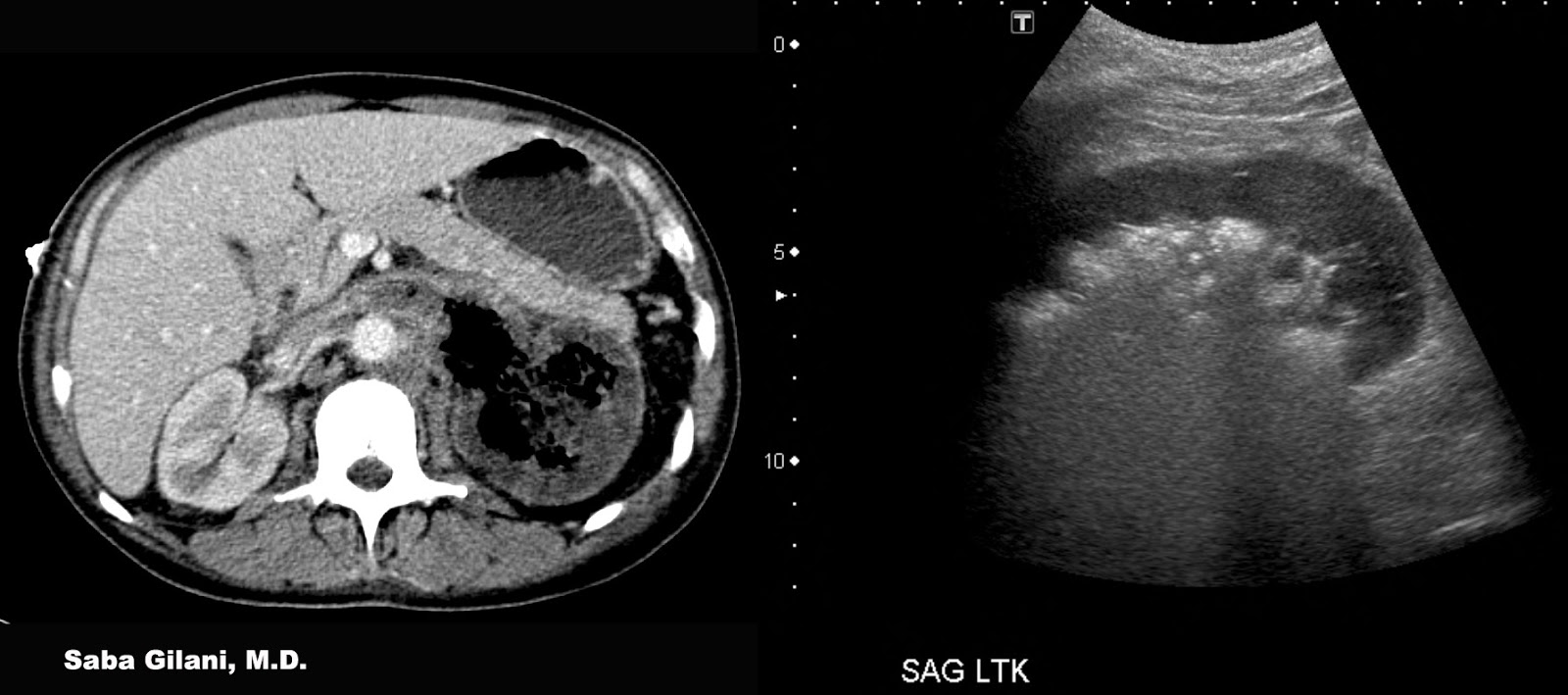 The left pterygopalatine fossa fat and the left retroantral fat are replaced by the mass (arrowheads).
The left pterygopalatine fossa fat and the left retroantral fat are replaced by the mass (arrowheads).
C, T2-weighted fast spin-echo (TR/TE, 5000 ms/120 ms) axial image depicts curvilinear hyperintensity areas around the mass (arrows).
D, Contrast-enhanced T1-weighted spin-echo (TR/TE, 620 ms/15 ms) axial image clearly shows the antral and nasal parts of the mass (arrowheads). Markedly enhanced portions, which are clearly demarcated from nonenhanced portions, are observed in the mass.
E, Hematoxylin-eosin stains (low-power field, original magnification ×4) reveal the hematoma with organization in case 1. There is a reactive hyperplasia of endothelial cells in the hematoma (asterisks). Scattered fibroblasts are observed in the fibrous tissue margin (arrows). In the margin of the specimen, an inflamed columnar epithelium is confirmed (arrowheads). No tumoral cells are found.
Case 2
A 76-year-old man presented with a 5-month history of repeated nasal bleeding.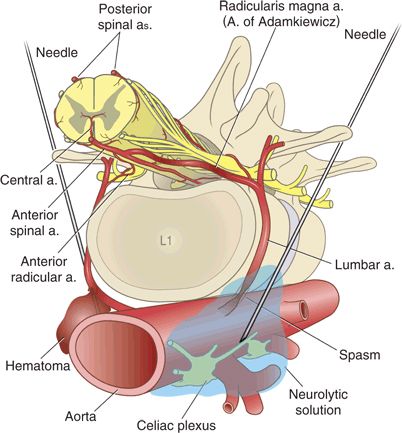 He has been followed for cirrhosis for several years; however, no coagulopathy was present. Endonasal examination demonstrated a pinkish mass in the right nasal cavity, with medial displacement of the lateral nasal wall. On CT, a 2- × 3-cm mass displaced and thinned the medial antral wall (Fig 2A). On MR imaging, the mass was primarily isointense to muscle on T1-weighted images but contained areas of high signal intensity (Fig 2B). On T2-weighted images, there was a central region of high signal intensity surrounded by a low signal intensity zone, and a thinner rim of high signal intensity surrounded the entire mass (Fig 2C). The mass was markedly enhanced in a multinodular manner on contrast-enhanced T1-weighted images (Fig 2D). A malignant tumor was initially suspected because of a history of repeated epistaxis and the age of the patient. During surgery, the mass was totally resected by a transnasal approach. Histolopathology showed only a fibrous encapsulated organized hematoma (Fig 2E).
He has been followed for cirrhosis for several years; however, no coagulopathy was present. Endonasal examination demonstrated a pinkish mass in the right nasal cavity, with medial displacement of the lateral nasal wall. On CT, a 2- × 3-cm mass displaced and thinned the medial antral wall (Fig 2A). On MR imaging, the mass was primarily isointense to muscle on T1-weighted images but contained areas of high signal intensity (Fig 2B). On T2-weighted images, there was a central region of high signal intensity surrounded by a low signal intensity zone, and a thinner rim of high signal intensity surrounded the entire mass (Fig 2C). The mass was markedly enhanced in a multinodular manner on contrast-enhanced T1-weighted images (Fig 2D). A malignant tumor was initially suspected because of a history of repeated epistaxis and the age of the patient. During surgery, the mass was totally resected by a transnasal approach. Histolopathology showed only a fibrous encapsulated organized hematoma (Fig 2E).
Fig 2.
CT, MR imaging, and histopathologic findings in case 2.
A, The axial image of CT (bone algorithm) shows the mass in the right maxillary sinus. The pressure on the medial maxillary sinus wall has caused medial bowing of the wall (arrowheads).
B, T1-weighted spin-echo (TR/TE, 620 ms/15 ms) axial image depicts punctuate high signals on the mass.
C, T2-weighted fast spin-echo (TR/TE, 5000 ms/120 ms) axial image depicts a curvilinear hyperintensity area around the mass (arrows).
D, Contrast enhanced T1-weighted spin-echo (TR/TE, 620 ms/15 ms) axial image shows the mass (arrowheads). A central enhanced area corresponding with the area of central heterogeneous hyperintensity on T2-weighted image is observed in the mass.
E, Hematoxylin-eosin stains (low-power field, original magnification × 40) reveal the hematoma with organization in case 2. An admixture of fibrin network and hemorrhage (asterisk) is observed.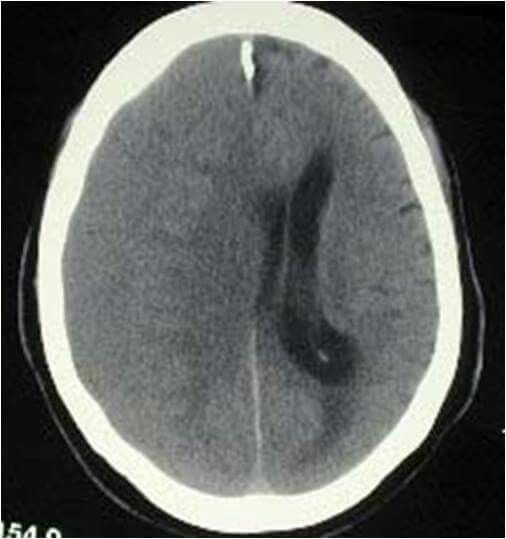 There is a reactive hyperplasia of endothelial cells (arrows). An inflamed columnar epithelium is confirmed (arrowheads). No tumoral cells are found.
There is a reactive hyperplasia of endothelial cells (arrows). An inflamed columnar epithelium is confirmed (arrowheads). No tumoral cells are found.
Discussion
An organized hematoma in the maxillary sinus is a rare lesion. Fewer than 100 cases1–8 have been reported to our knowledge. The mass usually originates in a single maxillary sinus and is generally located in the medial antral wall near the sinus ostium. Patients range in age between 20 and 76 years; no sex predominance is observed. It occurs in patients with and without a bleeding diathesis. The patient often presents with various symptoms that are caused by the mass, depending on the size and location. The most frequent symptom is nasal congestion and rhinorrhea because of the obstruction and secondary inflammatory process by the mass. Repeated epistaxis is reported in 70% of patients.2 Pain or facial swelling occurs when the mass compresses the adjacent structures. The mass gradually enlarges and causes pressure remodeling of the antral walls with some focal areas of apparent bone destruction.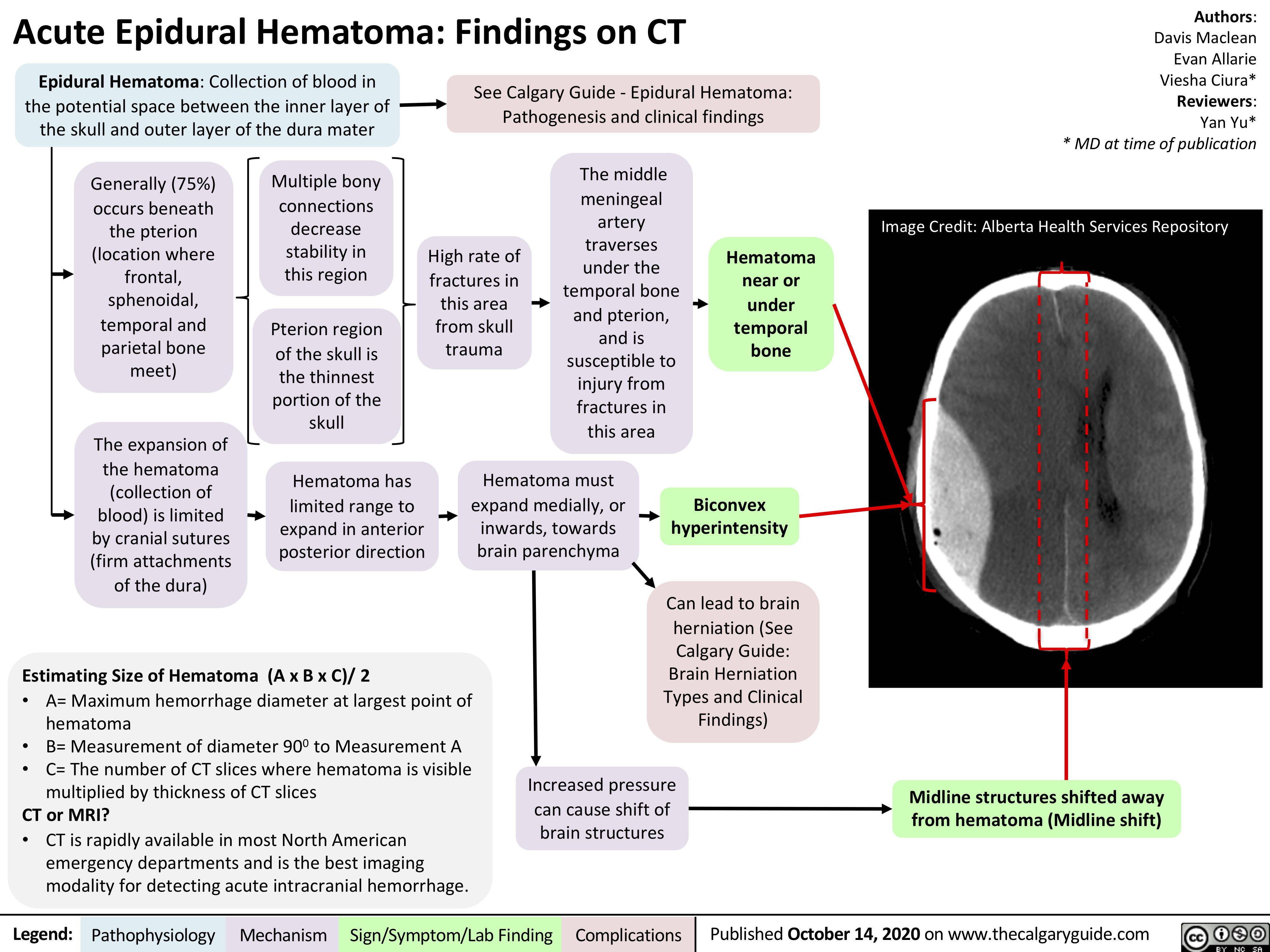 CT scans show an expansile maxillary sinus mass with some areas of bone resorption (Fig 1). On MR imaging, the mass usually has a variable signal intensity on T1- and T2-weighted images, ranging from low to high. After contrast administration, discrete areas of enhancement are present within the mass. The surrounding inflamed sinus mucosa, despite the bony changes, suggest a benign process on imaging.
CT scans show an expansile maxillary sinus mass with some areas of bone resorption (Fig 1). On MR imaging, the mass usually has a variable signal intensity on T1- and T2-weighted images, ranging from low to high. After contrast administration, discrete areas of enhancement are present within the mass. The surrounding inflamed sinus mucosa, despite the bony changes, suggest a benign process on imaging.
The pathogenesis of organized hematomas has not been elucidated. However, Lee et al3 suggest a possible mechanism for the formation of an organized hematoma as follows: 1) repeated hemorrhage in the semiclosed lumen (maxillary sinus) forms a hematoma encapsulated by fibrosis; 2) the encapsulation prevents the absorption of the hematoma and induces vascularization, which causes rebleeding and increasing pressure within the hematoma; and 3) the progressive expansion of a hematoma causes the demineralization of adjacent structures. A variety of benign lesions or clinical states have been described in association with the development of an organized hematoma and they display similar conditions clinically and radiologically. Ozaki et al4 suggest that a hematoma originates from a hemangioma or an inflammatory vascular injury, and they define an organized hematoma without an underlying hemangioma as an inflammatory pseudotumor. A bleeding diathesis, an aggressive fungal infection, radiation therapy, a postoperative complication, or trauma are also potential causes of a similar condition.5–9 The photomicrograph of the histopathologic specimen in our subjects shows excessive endothelial proliferation with adjacent subacute and chronic hematoma and surrounding fibrous tissue margin. Histopathologic findings and clinical course in our subjects resemble those from other reports of hematomas of the maxillary sinus.10 We speculate that the same pathophysiologic mechanism may be responsible for the hematomas seen in conjunction with the entities described above. In our histopathologic specimens, there is no cholesterol cleft with reactive foreign-body giant cells seen in cholesterol granuloma.
Ozaki et al4 suggest that a hematoma originates from a hemangioma or an inflammatory vascular injury, and they define an organized hematoma without an underlying hemangioma as an inflammatory pseudotumor. A bleeding diathesis, an aggressive fungal infection, radiation therapy, a postoperative complication, or trauma are also potential causes of a similar condition.5–9 The photomicrograph of the histopathologic specimen in our subjects shows excessive endothelial proliferation with adjacent subacute and chronic hematoma and surrounding fibrous tissue margin. Histopathologic findings and clinical course in our subjects resemble those from other reports of hematomas of the maxillary sinus.10 We speculate that the same pathophysiologic mechanism may be responsible for the hematomas seen in conjunction with the entities described above. In our histopathologic specimens, there is no cholesterol cleft with reactive foreign-body giant cells seen in cholesterol granuloma. No mucous retention or infiltration of foamy histiocytes seen in the mucocele is observed. A hematoma is subepithelially located; thus, a hemorrhagic cyst is ruled out. We suggest that an organized maxillary sinus hematoma is different from these entities.
No mucous retention or infiltration of foamy histiocytes seen in the mucocele is observed. A hematoma is subepithelially located; thus, a hemorrhagic cyst is ruled out. We suggest that an organized maxillary sinus hematoma is different from these entities.
Conclusion
Benign hematoma of the sinus is a rare lesion of uncertain pathophysiology that may mimic a neoplasm. It is important to include this in the differential diagnosis of an expansile maxillary sinus mass containing a hemorrhagic product so that inappropriate surgery can be avoided.
Acknowledgments
We thank Dr Kenichi Wakasa for helpful comments on our article.
References
- ↵
Tadokoro K. Jyougakudou Ketsuryu ni tsuite. Dainichi Jibi 1917;23:359–60
- ↵
Fujii M. The diagnosis and therapy of paranasal blood boil. JOHNS 1995;11:705–08
- ↵
Lee PK, Wu JK, Ludemann JP. Hemorrhagic pseudotumor of the maxillary sinus: J Otolaryngol 2004;33:206–08
- ↵
Ozaki M, Sakai T, Ikeda K.
 Hemangioma of the nasal cavity and sinuses. Jikou 1977;49:53–58
Hemangioma of the nasal cavity and sinuses. Jikou 1977;49:53–58 - ↵
Gupta S, Mohapatra BB, Ghai S, et al. Haemophilic pseudotumor of the paranasal sinuses. Haemophilia 2001;7:595–99
Unlu HH, Mutlu C, Ayhan S, et al. Organized hematoma of the maxillary sinus mimicking tumor. Auris Nasus Larynx 2001;28:253–55
Tabaee A, Kacker A. Hematoma of the maxillary sinus presenting as a mass. Int J Pediatr Otorhinolaryngol 2002;65:153–57
- ↵
Segev Y, Landsberg R, Fliss DM. MR imaging appearance of frontal sinus barotrauma. AJNR Am J Neuroradiol 2003;24:346–47
- ↵
Bong-JL, Hyo-Jin P, Seong-Cheol H. Organized hematoma of the maxillary sinus. Acta Otolaryngol 2003;123:869–72
- ↵
Yagisawa M, Ishitoya J, Tsukuda M. Hematoma-like mass of the maxillary sinus.
 Acta Otolaryngol 2006;126:277–81
Acta Otolaryngol 2006;126:277–81
- Received July 30, 2006.
- Accepted after revision November 22, 2006.
- Copyright © American Society of Neuroradiology
Neck Hematomas
A rare injury that can happen after a car crash is a neck hematoma. A serious neck trauma car occasionally leads to hematoma of the neck. Other common causes of neck trauma include suicide attempts and hanging. The areas of the neck that are most predisposed to trauma are the anterior parts of the neck, such as the trachea and larynx. The upper portion of the neck is protected mostly by the head, whereas the posterior aspect of the neck is protected by the cervical spine.
A neck hematoma is caused by blunt neck trauma that is serious enough to cause dissection of the carotid artery or bleeding from a soft tissue injury. Carotid artery dissection secondary to trauma is particularly dangerous because it is a high flow artery that carries blood to the brain. If not enough circulation is getting to the brain because of pressure on the carotid artery, stroke symptoms can appear.
Carotid artery dissection secondary to trauma is particularly dangerous because it is a high flow artery that carries blood to the brain. If not enough circulation is getting to the brain because of pressure on the carotid artery, stroke symptoms can appear.
If you or a loved one has suffered severe neck injuries in an accident that was caused by another person’s negligent action, you have the legal right to file a claim for monetary compensation. Our experienced personal injury lawyers are dedicated to helping injured clients obtain full compensation for their injuries. Call us today at (916) 921-6400 for free, friendly advice about your legal options.
Neck Hematomas: Symptoms and Treatments
Table of Contents
Signs and Symptoms of a Throat or Neck Hematoma
When a person suffers a neck injury of any kind, there can be bleeding that interferes with the person’s voice, breathing and even eating. Large hematomas can affect all the structures of the neck. Common signs and symptom of injury to the neck structures from a neck hematoma include the following:
Common signs and symptom of injury to the neck structures from a neck hematoma include the following:
- An obvious area of increased focal swelling about the neck
- Bruising of the neck area
- Alteration in the voice
- Inspiratory stridor
- Spitting up blood
- Coughing up blood
- Hoarseness
- Drooling
- Shortness of breath
- Pain with palpation to the affected area or secondary to coughing or swallowing Crepitus, which is the finding of air in the soft tissue
- Resistance to passive maneuvers of the neck
- Paralysis of the opposite side of the body
- Hypotension
- Decreased level of consciousness
Diagnosis of a Neck Hematoma
A chest x-ray or x-ray of the neck may show areas of swelling or displacement of vital organs of the neck, such as the trachea or esophagus. The hematoma itself may be visible on x-ray. CT scan of the neck may show a large area of pooling of blood in one area of the neck.
An MRI scan of the neck will be able to show areas of soft tissue and bleeding, showing which areas may have been disrupted by the hematoma as well as the patency of the trachea and the carotid artery.
Color flow Doppler ultrasonography can show areas of stagnant and flowing blood within the neck. In some cases, this is not enough and neck angiography must be done to show where the bleeding is coming from.
Since the neck is so vascular with large arteries and veins, the hematomas tend to be quite large with ongoing bleeding that requires surgical intervention to stop the bleeding before there is compression of major structures in the neck. Contrast studies of the esophagus can show if it is being impeded upon by a large hematoma.
In some cases laryngoscopy, pharyngoscopy, bronchoscopy or esophagoscopy can be performed to see where there are active areas of bleeding, hematoma formation or disruptions of the larynx, esophagus, trachea or major bronchi.
A CBC and blood typing should be performed in cases of rapidly increasing hematomas. This is because the blood loss in major throat trauma can be extensive and there is a chance that this is a person who will need to receive at least one blood transfusion to make up for the extravasation of blood from the circulatory system to the soft tissue areas of the neck and chest.
This is because the blood loss in major throat trauma can be extensive and there is a chance that this is a person who will need to receive at least one blood transfusion to make up for the extravasation of blood from the circulatory system to the soft tissue areas of the neck and chest.
Management of Neck Hematomas
If the patient is stable, ice to the injured area should be applied as soon as possible in order for you to slow the rate of internal bleeding as much as possible and to reduce swelling of the tissues.
Airway management is a very important part of managing neck hematomas. The airway can be compromised at any time, so if you are seeing evidence of breathing distress, endotracheal intubation should be considered. This should be done before there is too much narrowing of the airways from pressure due to the hematoma.
If you start breathing for the patient with an endotracheal tube and there is ongoing respiratory distress, consider that this may represent a tension pneumothorax, which needs needle decompression on the side of the tension pneumothorax along with the possibility of chest tube placement to maintain expansion of the lungs.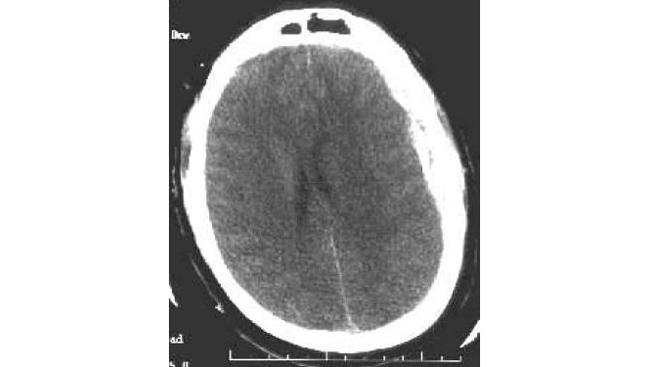
In general, direct pressure on the area of bleeding will slow the bleeding down enough so that there is no significant compression on vital structures. If this is not possible, such as if the source of the bleeding is deep within the neck, the patient may need a balloon tamponade to stop the bleeding internally. If direct pressure is not possible and the airway is occluding, consider undergoing a cricothyroidotomy with a packing of the pharynx to control upper airway bleeding that is contributing to the neck hematoma.
Which Structures are at Risk in a Neck Hematoma?
The neck is a fairly compact space that contains many nerves, blood vessels, the thyroid gland, airway, and gastrointestinal structures. The larynx and trachea are especially at risk because of a lack of supporting structures to stanch the bleeding. Between the airway and the spinal structures is the esophagus as well as the major blood vessels of the neck.
There are two fascial layers that blood can pass within. There is the deep cervical fascia that surrounds the trapezius muscles and the sternocleidomastoid muscles. It separates out the pre-tracheal region, which includes the larynx, trachea, pericardium and the thyroid gland, the prevertebral space, which contains the brachial plexus, the phrenic nerve, the prevertebral muscles, and the axial sheath, and the carotid sheath, which houses the vagus nerve, the internal jugular vein, and the carotid artery.
There is the deep cervical fascia that surrounds the trapezius muscles and the sternocleidomastoid muscles. It separates out the pre-tracheal region, which includes the larynx, trachea, pericardium and the thyroid gland, the prevertebral space, which contains the brachial plexus, the phrenic nerve, the prevertebral muscles, and the axial sheath, and the carotid sheath, which houses the vagus nerve, the internal jugular vein, and the carotid artery.
Musculoskeletal Structures
The musculoskeletal structures that can be impinged upon by a hematoma include the cervical muscles, ligaments and tendons, the first and second ribs, the hyoid bone, the vertebral bodies, and the clavicles. Nerves that can be damaged include the phrenic nerve, the last three cranial nerves, the brachial plexus, the spinal cord, the stellate ganglion, and the recurrent laryngeal nerve.
Vascular areas at risk for compression include the carotid artery, vertebral arteries, and the brachiocephalic, jugular and vertebral veins.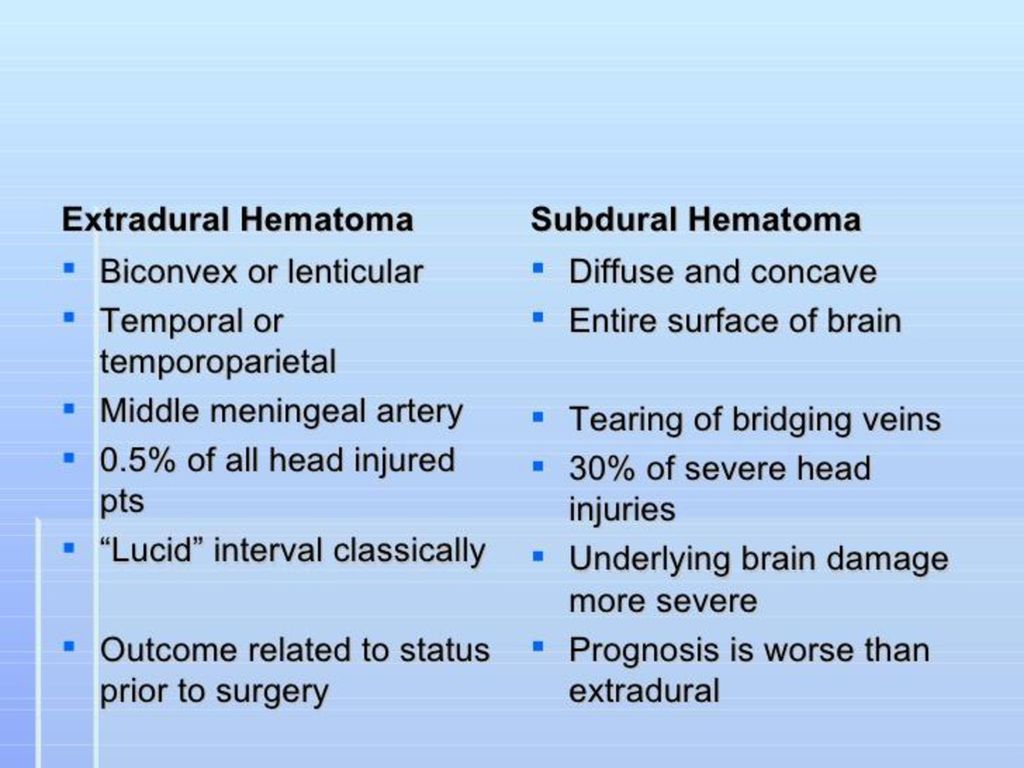 As to visceral areas at risk, there is the esophagus, the thoracic duct, larynx, trachea, and pharynx. Glands that can be affected in a cervical hematoma include the parotid glands, parathyroid glands, submandibular glands, and the thyroid gland.
As to visceral areas at risk, there is the esophagus, the thoracic duct, larynx, trachea, and pharynx. Glands that can be affected in a cervical hematoma include the parotid glands, parathyroid glands, submandibular glands, and the thyroid gland.
Neck hematomas can be extremely dangerous because the bleeding can be brisk and the blood can travel through the fascial planes in order to compress vital areas of the nervous system, circulatory system, viscera, and the musculoskeletal system.
The following video explains some treatment procedures for hematoma. Warning: the video contains graphic images.
Sacramento Traumatic Injury Lawyer
I’m Ed Smith, a Sacramento traumatic injury lawyer. If you or a loved one has suffered a neck injury in a severe car accident, call us for free, friendly advice at (916) 921-6400 or (800) 404-5400.
We are proud members of the Million Dollar Advocates Forum and the National Association of Distinguished Counsel.
See our client reviews on Avvo, Google, and Yelp and our case history of verdicts and settlements.
Photo by Lucija Ros on Unsplash
Editor’s Note: This page has been updated for accuracy and relevancy [cha 3.31.21]
90,000 Hematoma treatment, causes and diagnosis of leg hematoma in the CELT clinic.
At CELT you can get advice from a specialist traumatologist-orthopedist.
- Initial consultation – 3 000
- Repeated consultation – 2 000
Make an appointment
Symptoms
A bruise on the skin is always clearly visible. At first, it has a purple-blue color, and then begins to “bloom”, acquires a yellow and green color.If a sufficiently large amount of blood accumulates under the skin, then a protruding lump will form. At first, feeling it is very painful, but later the pain goes away.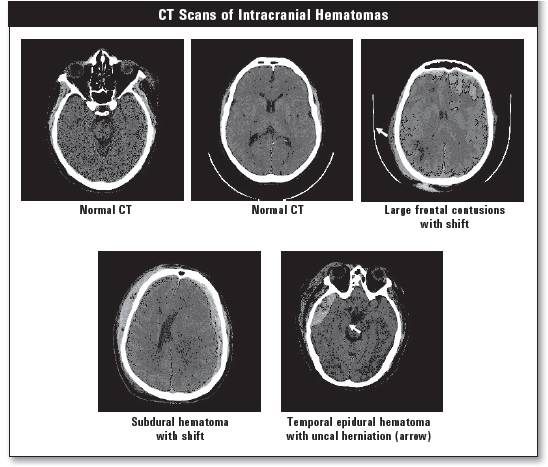
The outpouring of blood into the internal organs and into the substance of the brain is preceded by trauma. The main symptom is pain. Outwardly, in this case, the hematoma is not visible. If bleeding continues, then the victim becomes pale, weakness, dizziness occurs. With chronic internal bleeding, anemia comes to the fore.Cerebral hemorrhage is especially dangerous. Compression of the structures of the brain can occur, which is sometimes fatal.
Contributing factors
The formation of hematomas occurs after injuries, including pinching, blows, squeezing, bruises. Subarachnoid hemorrhage does not fall into this category, since it does not appear due to trauma, but due to damage to an unchanged vessel. Often, small hematomas appear due to the consumption of food in large quantities or when drinking alcoholic beverages.This is due to stretching of the gastrointestinal tract and the appearance of cracks.
The development of pathology is influenced by vascular weakness and problems with blood coagulation.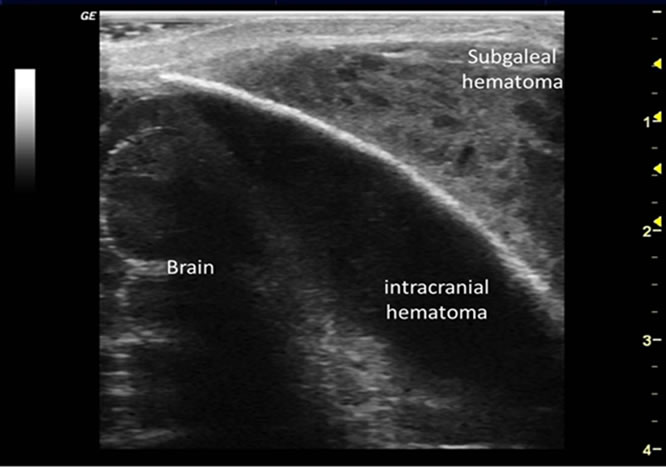 Often, due to a weakened immune system due to infections or due to age-related changes, the likelihood of accumulation of pus in the affected area increases.
Often, due to a weakened immune system due to infections or due to age-related changes, the likelihood of accumulation of pus in the affected area increases.
Classification of hematomas
In modern medicine, when classifying hematomas, the following are taken into account:
- Attitude to the vessel – pulsating and non-pulsating hematomas.
- Localization – in the cranial cavity, internal organs, under the skin or mucous membrane.
- The condition of the blood in the affected area is suppuration, clotted, fresh, infected.
- Symptoms are limited, enclosed, diffuse.
There are hematomas that do not fall into this classification. For example, intracerebral, intracranial, intraventricular. They are of the epidural or subdural type and cause serious complications.
Hematomas of soft tissues
Soft tissue hematomas are divided into 3 types:
- Lungs – appear 24 hours after injury and are accompanied by mild pain.
 No special treatment is required.
No special treatment is required. - Medium – appear in 5-6 hours and are accompanied by pain and swelling. The motor function of the limb is deteriorating. Consultation of a traumatologist is required.
- Severe – formed 2 hours after tissue damage. The function of the limb is impaired, there is acute pain and diffuse swelling.It is necessary to immediately consult a doctor to determine a treatment strategy.
Immediately after the injury, swelling appears, and the skin acquires a purple-cyanotic hue. After 5 days, the skin turns green as hemoglobin breaks down. Gradually, the hematoma dissolves and “flows” down.
If there are no complications, then the hematoma resolves on its own. In the worst case, a hard area appears that causes discomfort and impairs motor function.With the formation of an intramuscular seal, external symptoms are rarely observed, but the limb swells significantly and an area forms inside, touching which causes severe pain.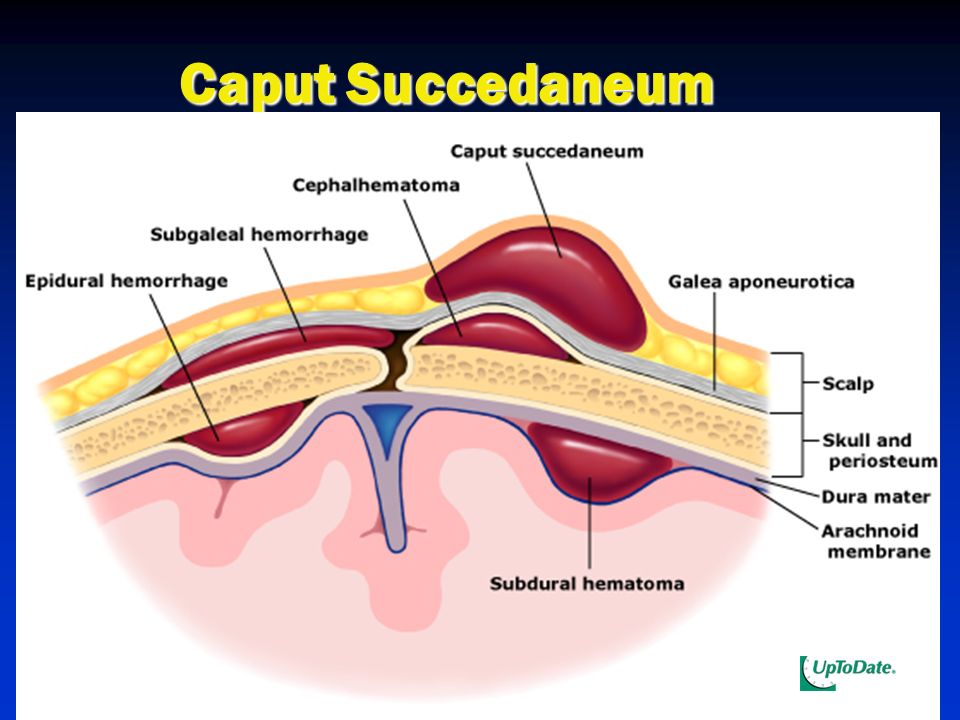
Note! With chronic intramuscular hematomas, an MRI is prescribed to determine the location and extent of tissue damage.
Surgical intervention is required for large seals. Treatment is carried out by a traumatologist. The opening of the infected seals is performed by the surgeon after a comprehensive diagnosis.The operation is performed on an outpatient basis, but in case of large hematomas, hospitalization is required. An autopsy is done to remove blood clots and flush. Drainage and suturing is mandatory. Sutures are not applied only with infected hematomas. Often, antibiotics are prescribed in the complex to eliminate the infection.
Intracranial hematomas
Intracranial hematomas are divided into the following types:
- Epidural.
- Subdural.
- Intracerebral.
- Intraventricular.
Epidurals appear in 1-3% of cases and due to trauma to the middle meningeal artery. Often pathology is observed with fractures of the bones of the skull or depressed fractures.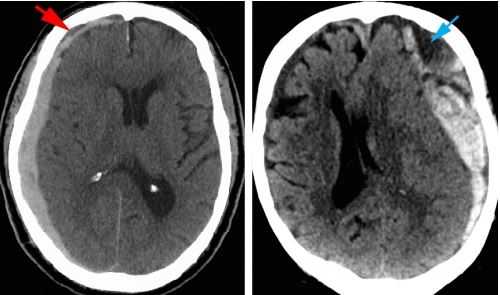 A hematoma develops in 2-3 hours or within a day. Lack of treatment leads to coma. The first symptoms are confusion and weakness. Children rarely pass out after a severe blow. Significant swelling of the brain does not lead to the detection of a light gap (which is rare in adults).
A hematoma develops in 2-3 hours or within a day. Lack of treatment leads to coma. The first symptoms are confusion and weakness. Children rarely pass out after a severe blow. Significant swelling of the brain does not lead to the detection of a light gap (which is rare in adults).
Subdurals appear in 1-7% of cases and pose a threat to human life, since death occurs in 60% of cases. There is an acute, subacute and chronic form of pathology. Bleeding is caused by a ruptured vein or artery in the damaged area. People report nausea and severe headache. Symptoms characteristic of compression of the brainstem are often observed. Lack of treatment and increased symptoms lead to coma.
Intracerebral are extremely rare in severe craniocerebral trauma.The light gap is not visible, the development of pathology occurs quickly. Hemiplegia or hemiparesis is common, and extrapyramidal symptoms appear.
Intraventricular infarctions are rarely diagnosed due to the severe condition of patients.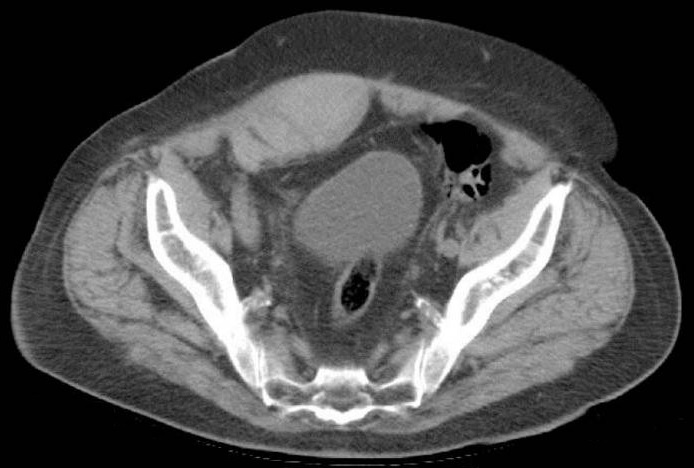 Acute disturbances of consciousness, an increase in body temperature, a decrease in heart rate, an increase in blood pressure are observed. To establish a diagnosis, a survey of close people is carried out, since the patient is unconscious. To locate the hematoma, CT or MRI is used.In the most severe cases, a lumbar puncture is used.
Acute disturbances of consciousness, an increase in body temperature, a decrease in heart rate, an increase in blood pressure are observed. To establish a diagnosis, a survey of close people is carried out, since the patient is unconscious. To locate the hematoma, CT or MRI is used.In the most severe cases, a lumbar puncture is used.
Diagnostics
Hematoma is diagnosed by visual examination. If the hemorrhage is located deep under the skin, in the internal organs, in the joint, then it is often very difficult to assess its size and possible consequences.
Patients are prescribed an examination, which may include:
Our doctors
Traumatologist-orthopedist, head of the minimally invasive traumatology and orthopedics service
Experience 36 years
Make an appointment
Traumatologist-orthopedist, doctor of medical sciences, doctor of the highest category, professor
Experience 44 years
Make an appointment
Treatment
Small bruises can be treated conservatively: physiotherapy procedures, medications are prescribed.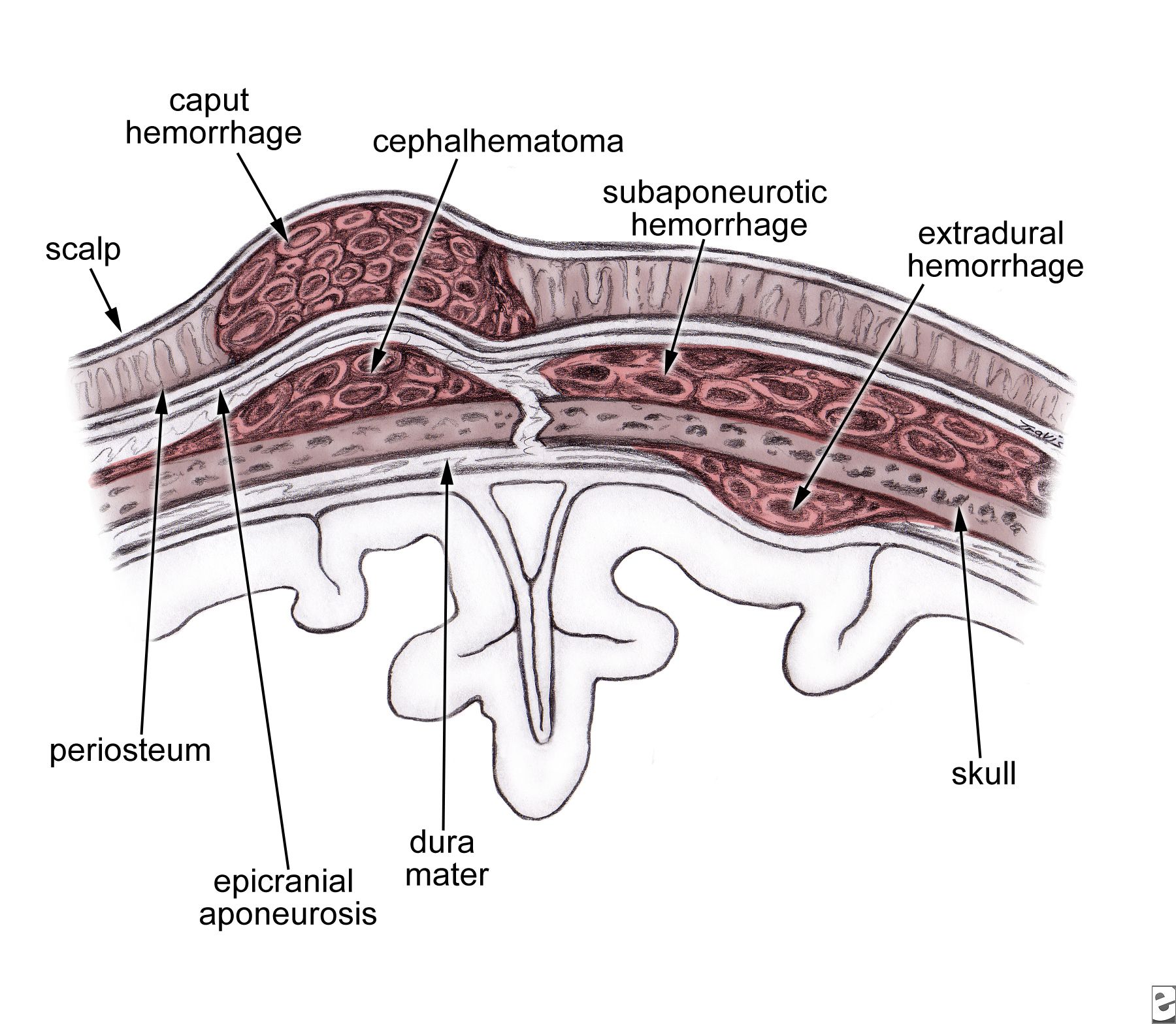
In case of large accumulations of blood, the hematoma is treated surgically: it is opened, blood or pus is evacuated, washed with antiseptics and drainage is installed. Antibiotics are prescribed if necessary.
In case of hemorrhage in internal organs, it is often necessary to carry out surgical intervention, during which it is necessary not only to remove the outflowing blood, but also to stop the bleeding.
The multidisciplinary clinic CELT employs experienced traumatologists and surgeons who perform operations for hematomas of various localization.Modern techniques used in our clinic help to provide effective treatment and minimize the risk of complications.
Orthopedic and Traumatology Services at CELT
The administration of CELT JSC regularly updates the price list posted on the clinic’s website. However, in order to avoid possible misunderstandings, we ask you to clarify the cost of services by phone: +7 (495) 788 33 88
90,000 Publications in the media
Acute traumatic subdural hematoma – an accumulation of blood in the space between the inner layer of the dura mater and the arachnoid membrane of the brain. Patients with acute traumatic subdural hematoma usually have significantly more primary brain damage than patients with epidural hematoma, therefore, the results of treatment in this group of patients are much worse.
Patients with acute traumatic subdural hematoma usually have significantly more primary brain damage than patients with epidural hematoma, therefore, the results of treatment in this group of patients are much worse.
Etiology and pathogenesis • Accumulation of blood around the source of bleeding in the area of the crush of the brain (usually the pole of the frontal and temporal lobes). In this case, there is significant primary damage to the entire brain, there is no “light gap”, general cerebral symptoms dominate in the form of a gross disturbance of consciousness • Rupture of “bridging” veins as a result of a sharp movement of the head during acceleration / deceleration.Primary brain damage is less and a “light gap” is possible, followed by a rapid deterioration of the condition. It should be remembered that in patients receiving anticoagulants, the risk of developing subdural hematoma is significantly higher (in men, 7 times, and in women, 26 times compared to the general population). In such patients, even minor trauma can lead to a life-threatening hematoma.
In such patients, even minor trauma can lead to a life-threatening hematoma.
Clinical picture is nonspecific and reflects the severity of primary TBI, sometimes a variant of the course with a “light” interval is observed (see. Epidural hematoma ).
Diagnostics. CT scan reveals a crescent-shaped mass located between the convexital surface of the brain and the inner plate of the bones of the cranial vault. Depending on the age of the hematoma, the signal intensity varies greatly
• 1-3 days (acute hematoma): CT density is high.
• From 4 days to 2–3 weeks (subacute hematoma): density similar to that of brain tissue.
• From 3 weeks to 3 months (chronic hematoma): the density is low (close to the density of the cerebrospinal fluid).
• More than 3 months: may take the shape of a lens (like an epidural hematoma), density higher than CSF but lower than fresh blood.
Treatment. In most cases, acute subdural hematoma requires urgent surgical intervention – craniotomy, removal of the hematoma. An absolute indication for surgery is a hematoma more than 1 cm thick according to CT data. In the postoperative period, intensive therapy with support for vital functions and control of the ICP level (should be less than 25 mm Hg) are required.Art.) – mannitol, ventricular drainage, barbiturates, hyperventilation.
Forecast. Mortality is 50–90%, but it should be borne in mind that it is primarily due to the primary traumatic brain injury, and not the hematoma as such. In elderly patients (over 60 years old) and in patients receiving anticoagulants, the mortality rate is close to 90-100%. Recently, the factors influencing the prognosis in acute traumatic subdural hematoma have been intensively investigated.Independent factors significantly affecting the prognosis: • Mechanism of injury: the worst prognosis in a motorcycle injury: without a helmet, mortality rate 100%, wearing a helmet – 33% • Age over 65 years significantly worsens the prognosis (mortality rate 82%, “functional” survival rate 5%) • Postoperative ICP level: less than 20 mm Hg – mortality rate 40%, more than 45 mm Hg. – almost 100% • Neurological status at the time of admission to a specialized hospital.
Mortality and “functional” survival (i.e.ie, with at least the ability to self-service), depending on the severity of TBI • 3 points on the Glasgow scale (mortality 90%, “functional” survival 5%) • 4 points on the Glasgow scale (mortality 76%, “functional” survival 10%) • 5 points on the Glasgow scale (mortality 62%, “functional” survival 18%) • 6-7 points on the Glasgow scale (mortality 51%, “functional” survival 44%)
Chronic subdural hematoma, despite the external similarity with acute subdural hematoma, has a number of significant differences.
Chronic subdural hematoma
Epidemiology. Chronic subdural hematoma usually occurs in the elderly (mean age 63). Less than 50% of them have a history of TBI. In 20-25% of cases, chronic subdural hematoma is bilateral.
Risk factors • Alcoholism • Epilepsy • Bypass surgery for hydrocephalus • Coagulopathy.
Etiology and pathogenesis. Chronic subdural hematoma is thought to develop from an unnoticed (most likely minor) acute subdural hematoma. The ingress of blood into the subdural space causes an inflammatory reaction, fibrin falls out and a hematoma capsule is formed. Subsequently, vascularization of the capsule, fibrinolysis and “liquefaction” of the blood clot in the center of the hematoma occur. The course of the hematoma is determined by the ratio of the processes of plasma filtration from the capsule and microbleeds into the cavity on the one hand and reabsorption of the hematoma contents on the other.
The clinical picture of is very variable: from minimal manifestations (prolonged headaches, an increase in dementia and behavioral disturbances) and symptoms resembling those in transient ischemic attacks, to the development of seizures, hemiplegia and coma (an extremely unfavorable course of the course). In many cases, a correct diagnosis cannot be made before a CT scan of the brain is performed.
Diagnostics: CT or MRI of the brain. In some cases, MRI is more informative (for example, in patients with so-called “isodensity” bilateral hematomas, when the hematoma is indistinguishable in density from the brain parenchyma, and there is no dislocation of the midline structures.
Treatment. All symptomatic and asymptomatic hematomas larger than 1 cm should be treated promptly. The purpose of the operation is to remove the liquid component of the hematoma (a minor operation through the milling hole, which can be performed under local anesthesia). Removal of the capsule is not indicated in most cases, because significantly increases surgical trauma and can cause additional gross neurological deficits. Before surgery, a study of the hemostasis system is mandatory and the identified violations are corrected.The feasibility of prophylactic administration of anticonvulsants is controversial, since this does not affect the risk of developing “late” seizures.
Forecast. An improvement in neurological status is observed in almost all patients immediately after drainage, and there is a pattern: the higher the pressure in the hematoma, the more pronounced the clinical effect. Mortality according to various authors ranges from 0 to 8% and is determined mainly by the general condition of the patient, and not by the very fact of draining the hematoma.On the control CT scan performed on the 10th day after the operation, the remnants of the hematoma are detected in 78% of cases, after 1.5 months – in 15%. Indications for re-drainage are an increase in hematoma residues in volume and a deterioration in the patient’s neurological status.
MKD-10. I61 Intracerebral hemorrhage
Hematoma, breast fibrosis, oleogranuloma
Breast oleogranuloma.
Oleogranuloma is an inflammatory neoplasm of the mammary gland.The cause of the occurrence should be considered the reaction of the gland to an injury of one nature or another, or the reaction of inflammation to contact with foreign material. Trauma can also be considered a simple injection and surgery on the mammary gland.
Some gland cells become inflamed. Then, for example, a part of adipose tissue can become dead, connective tissue grows around the reaction zone or around foreign material (injections of fats and oils). In the place of injury, in the area of inflammation, a post-inflammatory formation of a nonspecific nature later appears.
Inflammation is accompanied by the appearance of tumor-like, benign neoplasms. Due to the characteristics of the clinical manifestation of oleogranuloma, it can often be confused with manifestations of a malignant process. Fortunately, oleogranulomas rarely become cancerous. Therefore, their danger is greater in the fact that under the “mask” of oleogranuloma, an oncological process can arise and develop.
There are 3 most common reasons for the development of breast oleogranuloma:
– due to contact with foreign material (synthetic threads, silicone after surgery, injections of fats, oils, etc.in tissue), which causes an inflammatory response that is limited;
– after breast surgery (plastic surgery, sectoral resection, organ-preserving surgery, often after mastectomy) as a result of tissue reaction to suture material or silicone implants;
– after mechanical trauma to the mammary gland (often accompanied by necrosis of fat cells).
Symptoms of oleogranuloma manifestation are often painful sensations. A dense, painful formation can be identified, which subsequently encapsulates and acquires density due to calcification of the membrane.Small nodules are sometimes able to be eliminated on their own, leaving behind only a small tissue compaction. “Old” calcified formations are not capable of regression and transition to a “dormant state”.
We diagnose this pathology in Kiev very scrupulously, so as not to miss the little things that are important for the patient’s future health. Our examination includes a clinical examination by an experienced mammologist with a thorough history taking, an ultrasound examination with elastography or digital mammography to study the structure of the formation and its obligatory cytological or histological examination to understand the cause of the process and the absence of oncopathology.
Oleogranulomas cannot be treated with conservative treatment. The method of their removal is only surgical. An obligatory step of high-quality treatment with oleogranulomas after their removal is the subsequent anti-inflammatory therapy. Oleogranuloma (treatment is available right now) is a complex pathology that requires the attention of specialized specialists.
Breast fibrosis.
Fibrosis is a pathological proliferation of connective tissue (stroma) and often leads to the formation of cicatricial neoplasms.The disease can be catalyzed by pathological or physiological processes: hormonal imbalance and its aggravating reasons, the presence of inflammatory processes, previous surgical interventions on the chest, age-related changes in the structure of the mammary gland. In its pure form, fibrosis is extremely rare, more often as part of such a pathology as fibrocystic mastopathy.
By itself, fibrosis is not a disease with a high probability of developing oncopathology. However, it is dangerous because, under the “innocent mask” of this pathology, one can miss the really serious processes in the mammary gland.
Benign fibrosis is manifested by a painless compaction concentrated at one point, more often in the upper outer quadrants of the mammary gland. Also, concomitant symptoms can be changes in skin color, the presence of discharge, the appearance of significant discomfort in the chest.
The classification of formations is diverse: local and diffuse, nodular and cystic, periductal (around the ducts) and ductal (damage to the milk ducts, which often manifests itself in the menopause), linear (they are also interlobular, accompanied by the appearance of cysts), involutive (associated with age-related changes in the mammary gland).
Since fibrosis can serve as an unfavorable background for the development of other pathologies, and the disease of fibrocystic mastopathy is currently one of the most common diseases of the mammary glands, we approach the diagnosis of this pathology in the most careful way, identifying and correcting concomitant disorders of the endocrine system.
Our diagnosis consists in a clinical examination by a mammologist, who, upon confirmation of the presence of fibrosis, prescribes an additional mammography or ultrasound examination, as well as an endocrinologist’s consultation, hormonal panel studies, puncture biopsy of the formation, if necessary, to control the absence of cancer.
Competent treatment of fibrosis implies a comprehensive elimination of not only the existing benign proliferation of fibrous tissue, but also the hormonal causes that led to its appearance. Surgical correction is extremely rare.
It should be noted that the treatment of fibrosis, however, as well as other diseases of the mammary glands, which are based on hormonal disorders, will be more effective when correcting concomitant external factors. It is important: the normalization of the psycho-emotional state, vitamin therapy and the intake of deficient microelements (folic acid, potassium iodide), the normalization of the work and rest regime, the balancing of the diet, the rejection of bad habits, the harmonization of regular sex life, etc.
Of course, it is possible to identify which of the factors is most significant in each specific case only with a thorough collection of anamnesis of life and disease, and only an experienced endocrinologist who faces similar problems repeatedly can do it. We will help you overcome breast fibrosis whose treatment is as smooth and effective as possible in our Kiev center.
Breast hematoma.
Hematoma (due to contusion, trauma, damage) of the mammary gland is a limited accumulation of blood in the tissues resulting from damage to the blood vessels, which does not have the ability to degenerate into a malignant formation.Hematoma is a rather rare occurrence in our mammological practice, up to about 2% of all identified pathologies.
In most cases, trauma to the chest leads to hematoma. Small local damage to the breast tissue is regenerated quite quickly and independently. However, a large hematoma requires medical supervision, since it is dangerous for possible bleeding, suppuration, increased pain, and the ability to transform into oleogranuloma.
We diagnose hematoma during a clinical examination by a mammologist, the diagnosis is based on the presence of a history of recorded injuries.Additionally, we use ultrasound diagnostics or mammography. If necessary, we perform a puncture of the neoplasm in order to clarify the diagnosis (the blood received in the punctate confirms the diagnosis). Puncture in such cases has a positive effect, since it reduces the amount of blood that must dissolve on its own.
External manifestations of hematomas are not always visual as with ordinary bruises and abrasions. Sometimes the breasts can be just swollen, painful, without discoloration of the skin and the presence of seals.In this case, only an experienced specialist can detect the consequences of a bruise using the diagnostic methods indicated above. Breast hematoma, the treatment of which can be simple, in case of timely treatment, is examined exclusively by a qualified specialist. Self-medication is unacceptable.
Treatment of breast hematomas is predominantly conservative and can take up to 6 weeks. Sometimes, to activate the process of tissue regeneration, aspiration puncture is used to drain the hematoma core (remove excess fluid).
In some cases, a hematoma can fester and the disease will turn into an abscess of the breast, requiring surgical treatment.
How to quickly get rid of bruises at home
The bruise can be prevented or masked.
Photo: pexels.com
With these home methods, bruises can be prevented, or at least masked.
Some people, especially women, bruise more often. This is due to the fact that they have weak connective tissue, and if you press on the skin, small veins burst, resulting in a bruise. It takes about two to three weeks for the bruise to completely disappear.
Main causes of bruising:
Age. Over the years, the soft tissue around the blood vessels becomes thinner.Accordingly, the risk of blood vessel damage increases as the skin loses its elasticity.
Medicines. Certain medications can make the skin prone to bruising. This applies to drugs for the treatment of inflammation and asthma, anticoagulants and antidepressants.
Disorders of blood coagulation and circulation. A low platelet count can lead to hematoma formation even at the slightest touch.If you find large bruises that are not due to a blow, see a doctor immediately.
5 tips to get rid of a hematoma:
Immediate cooling. If there was a blow, cool the area quickly to prevent bruising. Don’t put ice or something cold on the skin, put the cloth first. The cold causes the blood vessels to constrict, the blood no longer comes out and swelling does not occur.
Press down on the bruised area with your hand. When there is no cold compress nearby, immediately after the impact, press firmly on the damaged area with your hand and hold for as long as possible.
Warming compresses. Not earlier than from the second day after the injury, when the body has already recovered a little, warm compresses increase blood circulation. As a result, the blood in the hematoma dissolves faster.
Gels and creams. Arnica ointments have decongestant, anti-inflammatory and analgesic effects. In general, extracts from the following plants also aid in the healing process: comfrey, St. John’s wort, camphor, calendula, horse chestnut.
Disguise. If a bruise gets in the way, you can camouflage it. To do this, choose a waterproof and opaque product that matches your skin tone.Apply makeup in daylight. Additional protection: flesh-colored opaque tights if the legs are stained.
Brain hemorrhage –
Postoperative examination of glial brain tumor
Brain hemorrhage
Hemorrhage in the brain is expressed by bleeding with blood entering the brain tissue (intracerebral hemorrhage) or into the space between the outer meninges and the cranium (subarachnoid, subdural, epidural hemorrhages).All these bleeding can occur as a result of traumatic brain injury, and due to any other reasons associated with diseases such as systemic hypertension and other systemic diseases of the body.
Intracerebral hemorrhage
Intracerebral hemorrhage occurs as a result of rupture of the walls of small blood vessels that supply the brain, especially in certain areas of the brain, and therefore, blood from the burst vessels enters the brain and destroys the brain tissue.Every year, intracerebral hemorrhage occurs in approximately 12-15 patients out of 100,000. Moreover, this indicator is significantly higher in patients over the age of 40. The ratio of men and women who have intracerebral hemorrhage is 1: 1.67.
Risk factors include hypertension, amyloid angiopathy, trauma, alcohol consumption and tobacco smoking. In addition, the use of drugs such as aspirin, nonsteroidal anti-inflammatory drugs, and thrombolytic drugs can also cause intracerebral effusion.With age, the vessels of the brain are subject to wear and tear and lose their elastic properties. In this connection, the walls of such vessels lose their elasticity. Loss of elasticity and wear and tear of the vascular walls caused by diseases such as amyloid angiopathy and hypertension contribute to rupture of blood vessels and leakage of blood into the brain tissue. This creates an accumulation and formation of blood clots that have a devastating effect on brain tissue. At the same time, such a manifestation, due to the formation and accumulation of such blood clots, disrupting the circulatory system, contributes to the development of ischemia in the brain.
Clinical symptoms most often manifest as unilateral weakening of muscle tone, headache and changes in consciousness. In addition, slurred speech, seizures, nausea and vomiting may occur.
To establish a preliminary diagnosis, it is necessary to obtain detailed information regarding the patient’s medical history. When making a diagnosis, it is necessary to analyze the radiological results and imaging images obtained during the course of the computed tomography and magnetic resonance imaging.When choosing a diagnostic method, preference is given to computed tomography due to the possibility of an accurate diagnosis within a short time.
In order to protect the vital functions of the patient in the treatment of intracerebral hemorrhage, it is first of all necessary to provide support for the respiratory and cardiovascular systems. After analyzing and determining the volume of bleeding and its localization in the brain, a general assessment of the patient’s neurological picture is performed.Then a decision is made that determines which treatment should be prescribed to the patient: surgical or medication. With surgery, the blood mass accumulated in the brain tissue is removed, as well as bleeding stops. With drug treatment, the patient is prescribed drugs to reduce intracranial pressure and reduce edema in the area of localization of bleeding. In addition, antiepileptic drugs may be prescribed to prevent the possible occurrence of seizures.
Subarachnoid hemorrhage
Subarachnoid hemorrhage is a hemorrhage in the subarachnoid space or cavity that is located between the arachnoid and pia mater. It is observed in 10-16 people per 100,000 people. Risk factors include hereditary diseases, tobacco smoking, alcohol use, hypertension, and the use of drugs such as oral contraceptives, cocaine, and amphetamines.Subarachnoid hemorrhage can occur spontaneously, usually due to rupture of an arterial aneurysm, or as a result of traumatic brain injury, hypertension, atherosclerosis, arteriovenous malformations, brain tumors, bleeding disorders, encephalitis, meningitis, meningoencephalitis, as well as associated anticoagulant therapy or as a result of any other unknown cause.
The most common symptoms most often manifest in the form of a very intense headache and stiff neck are.In addition, patients may experience nausea, vomiting, dizziness, split vision, convulsions, and clouding of consciousness, which accompany the symptoms that occur with intracerebral hemorrhage. The diagnosis is made after examination with the help of computed tomography, thanks to which the presence of hemorrhage in the brain tissue is most quickly revealed. Once bleeding is identified, angiography is required to visualize cerebral vessels.
If an aneurysm is detected during angiography, then, depending on the area of its localization and its characteristic properties, it must be removed using surgical or endovascular methods, while the vessel walls are strengthened using a special material.Despite all developments in
modern medicine, 25-30% of patients with subarachnoid hemorrhage die before they are admitted to the hospital, while 30-50% of the remaining patients are completely cured.
Epidural hematoma
Epidural hematoma is an accumulation of blood that occurs between the inner surface of the skull and the dura mater as a result of traumatic injury to the bones of the skull. The cause of such a hematoma is rupture and damage to the blood vessels of the dura mater, which, as a rule, are the result of an injury or fracture of the skull bones.Epidural hematoma accounts for 0.2-0.6% of all cases of brain injury. Clinically, epidural hematoma manifests itself in three ways: first of all, it is a lucid interval – a temporary improvement in the patient’s condition after a traumatic brain injury, followed by a sharp deterioration. In the second case, the consciousness is completely closed and there is no improvement in the state, in the third case there is a clouding of consciousness. An accurate diagnosis is confirmed by computed tomography, while magnetic resonance imaging can also be used for diagnosis.But due to the fact that computed tomography makes it possible to obtain results that are of vital importance in a faster way, and it is more preferable in the diagnosis of this type of hematoma.
Treatment of epidural hematoma involves tracking the accumulated blood in the area between the inner surface of the skull and the dura mater and the degree of pressure it exerts on the brain tissue, followed by surgical intervention.If there is a small amount of accumulated blood, the patient is closely monitored and his health is constantly monitored. If, however, a decision is made on the need for a surgical intervention, it should be implemented as soon as possible. During surgery, the blood accumulated in the brain tissue is drained and, determining the source of its occurrence, the bleeding is stopped. The outcome of the surgical intervention brings quite brilliant results.Good results are achieved in 55-89% after surgical treatment, while the mortality rate ranges from 5-29%.
Subdural hematoma
In patients with head trauma, subdural hematoma is observed in 8-57% of cases. It is an accumulation of blood that occurs between the inner surface of the skull and the dura mater as a result of traumatic injury to the bones of the skull. In 50% of cases, subdural hematoma is accompanied by various other pathologies of the brain.In general, patients are presented with severe neurological disorders and in 50% of cases, these patients are unconscious. The best ways to diagnose an epidural hematoma are computed tomography and magnetic resonance imaging.
Surgery is used to treat hematomas that cause neurological damage and exert pressure on the surrounding tissue. During surgery, the blood accumulated in the brain tissue is removed and the source of occurrence is determined and the bleeding is stopped.The mortality rate ranges from 42-90%, while this figure is significantly higher than with an epidural hematoma.
90,000 Injuries to the external nose in children
Tsvetnoy Boulevard
Moscow, Samotechnaya, 5
around the clock
Preobrazhenskaya Square
Moscow, B.Cherkizovskaya, 5
Daily
from 09:00 to 21:00
Day off:
January 1, 2020
Dmitry Donskoy Boulevard
Moscow, Green, 28 building 1
Daily
from 09:00 to 21:00
Michurinsky prospect
Moscow, Bolshaya Ochakovskaya, 3
Daily
from 09:00 to 21:00
| Consultation with a surgeon | 3200.00 |
| Consultation of a doctor (head of the department) | 3500.00 |
| Control examination by a doctor (when performing procedures) | 1500.00 |
| Surgical procedures | |
| Wound dressing (1st category of complexity) | 1200.00 |
| Wound dressing (2nd category of complexity) | 1700.00 |
| Wound dressing (3rd category of complexity) | 2100.00 |
| Wound drainage | 800.00 |
| Treatment of superficial injuries of the skin | 700.00 |
| Bandaging one finger after nail removal | 600.00 |
| Removal of postoperative sutures, ligatures from the wound up to 4 cm | 700.00 |
| Removal of postoperative sutures, ligatures from a wound over 4 cm | 1500.00 |
| Adhesive plaster sutures for a wound up to 4 cm | 500.00 |
| Adhesive plaster sutures for a wound over 4 cm | 800.00 |
| Removal of postoperative sutures after plastic surgery | 2500.00 |
| Procedure in a surgical room of the 1st category of complexity | 800.00 |
| Procedure in a surgical room of the II category of complexity | 2000.00 |
| Removal of drainage from subcutaneous fat | 700.00 |
| Removal of drainage from the abdominal cavity | 200.00 |
| Removal of drainage from the chest cavity with the imposition of a sealed suture | 2800.00 |
| Puncture of the formation of the thyroid gland under the control of ultrasound * | 5000.00 |
| Surgical operations | |
| Opening of the focus of inflammation 1st category of complexity | 3000.00 |
| Opening of an inflammation focus 2 category of complexity | 5000.00 |
| Opening of the focus of inflammation, 3rd category of complexity | 7000.00 |
| Opening of soft tissue hematoma 1st category of complexity | 3000.00 |
| Opening of soft tissue hematoma 2 category of complexity | 5000.00 |
| Opening of soft tissue hematoma, 3rd category of complexity | 7000.00 |
| Subungual hematoma lancing | 1000.00 |
| Primary surgical debridement of wounds without suturing 1st category of complexity | 1000.00 |
| Primary surgical debridement of wounds without suturing 2nd category of complexity | 3000.00 |
| Primary surgical debridement of wounds without suturing 3rd category of complexity | 6000.00 |
| Primary surgical debridement of wounds with suturing 1st category of complexity | 2000.00 |
| Primary surgical debridement of wounds with suturing 2nd category of complexity | 4000.00 |
| Primary surgical debridement of wounds with suturing 3rd category of complexity | 7000.00 |
| Applying secondary seams 1 category of complexity | 1000.00 |
| Applying secondary seams 2 category of complexity | 2000.00 |
| Ingrown toenail removal (1 nail plate) | 1500.00 |
| Removal of vulgar warts, plantar warts, condyloma (per unit) | 2000.00 |
| Corn removal | 2500.00 |
| Removal of papillomas up to 1 cm in size (per unit) | 500.00 |
| Removal of papillomas larger than 1 cm (per unit) | 1000.00 |
| Removal of benign formations of the skin and subcutaneous tissue (atheroma, fibroma, lipoma) ** 1st category of complexity | 5000.00 |
| Removal of benign formations of the skin and subcutaneous tissue (atheroma, fibroma, lipoma) ** 2nd category of complexity | 9000.00 |
| Removal of benign formations of the skin and subcutaneous tissue (atheroma, fibroma, lipoma) ** 3rd category of complexity | 15000.00 |
| Removal of benign formations of the skin and subcutaneous tissue (atheroma, fibroma, lipoma) ** 4 category of complexity | 25000.00 |
| Removal of a foreign body without cutting the soft tissues | 500.00 |
| Removal of a foreign body with dissection of soft tissues 1 category of complexity | 5000.00 |
| Removal of a foreign body with dissection of soft tissues 2 category of complexity | 7000.00 |
| Removal of a foreign body with dissection of soft tissues 3rd category of complexity | 10000.00 |
| Diagnostic puncture of soft tissues | 1000.00 |
| Diagnostic puncture (fine-needle biopsy) of soft tissue neoplasms under ultrasound control | 5000. |

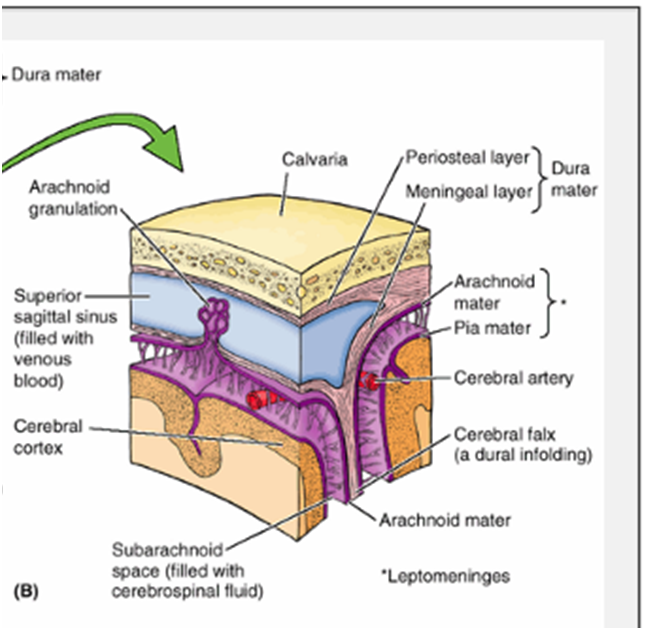 Hemangioma of the nasal cavity and sinuses. Jikou 1977;49:53–58
Hemangioma of the nasal cavity and sinuses. Jikou 1977;49:53–58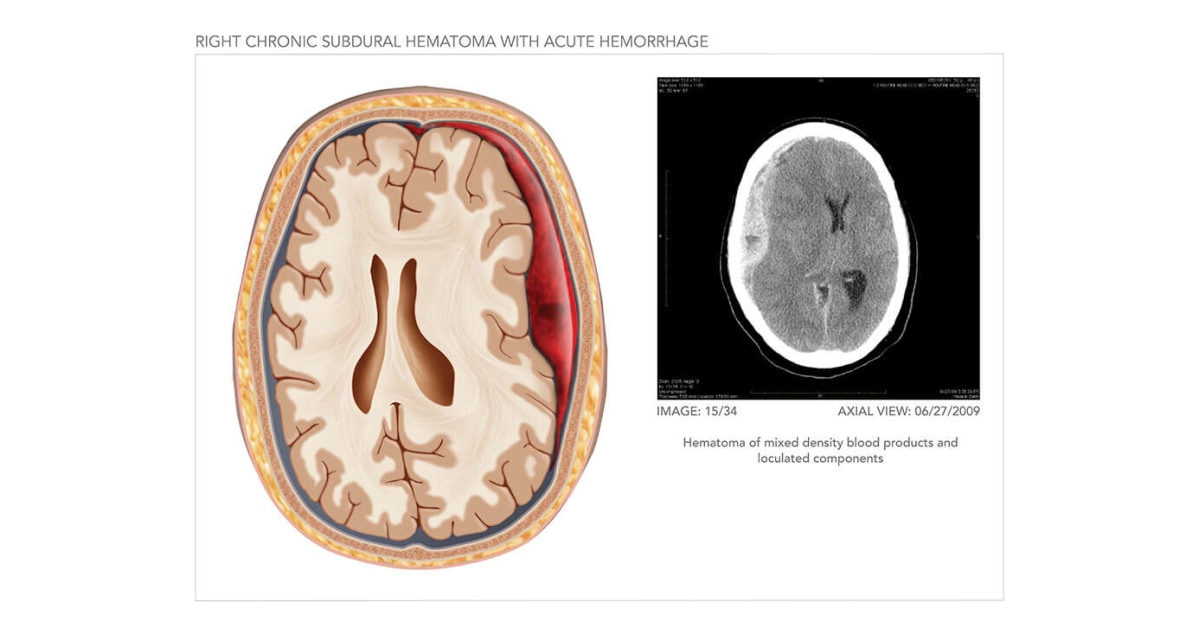 Acta Otolaryngol 2006;126:277–81
Acta Otolaryngol 2006;126:277–81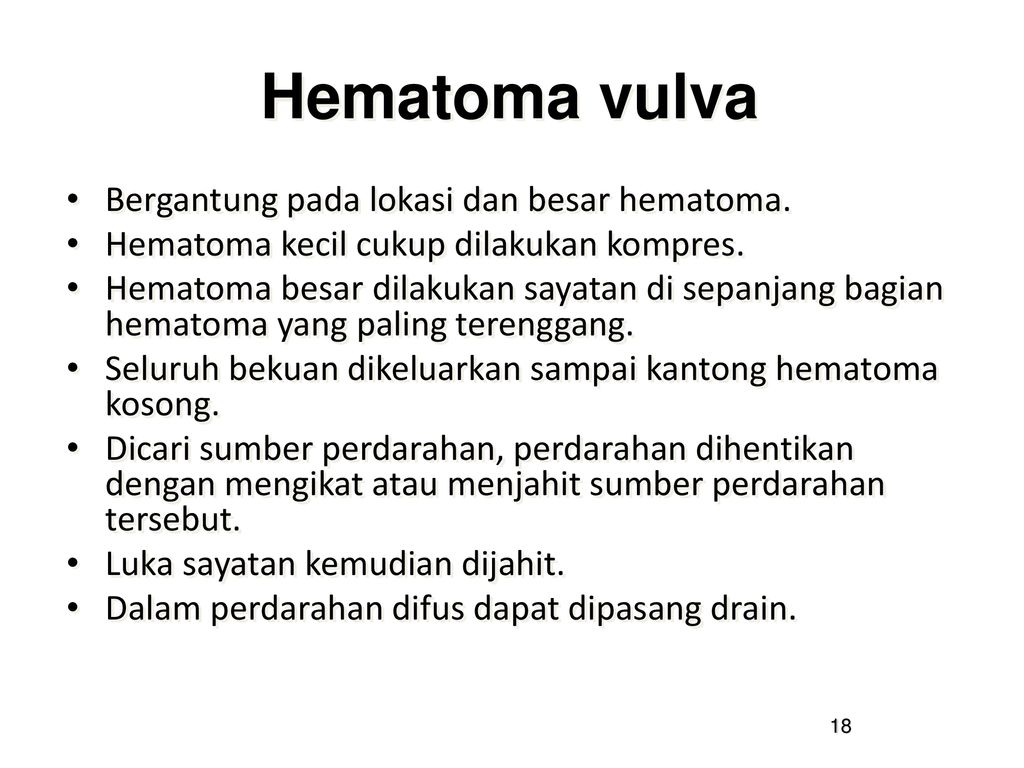 No special treatment is required.
No special treatment is required.